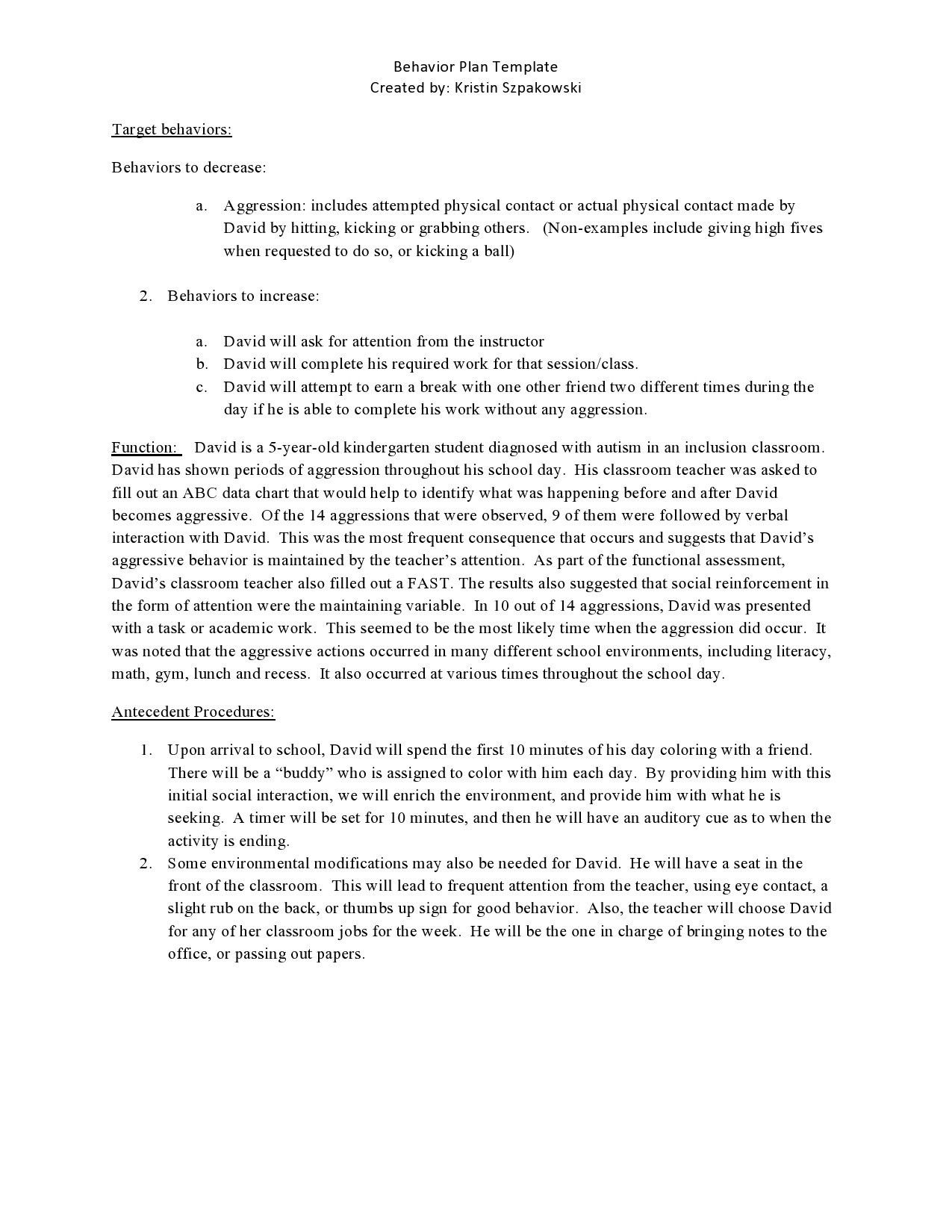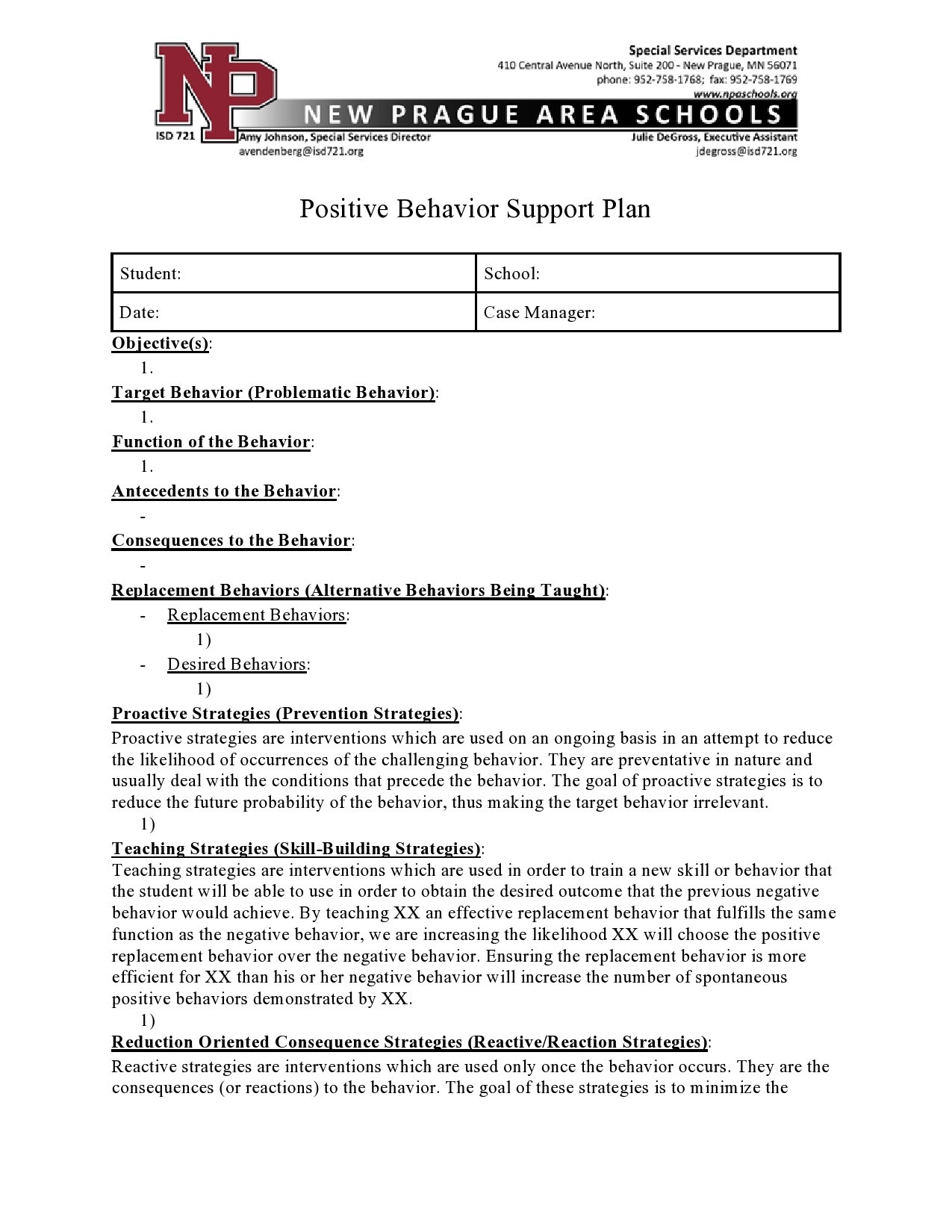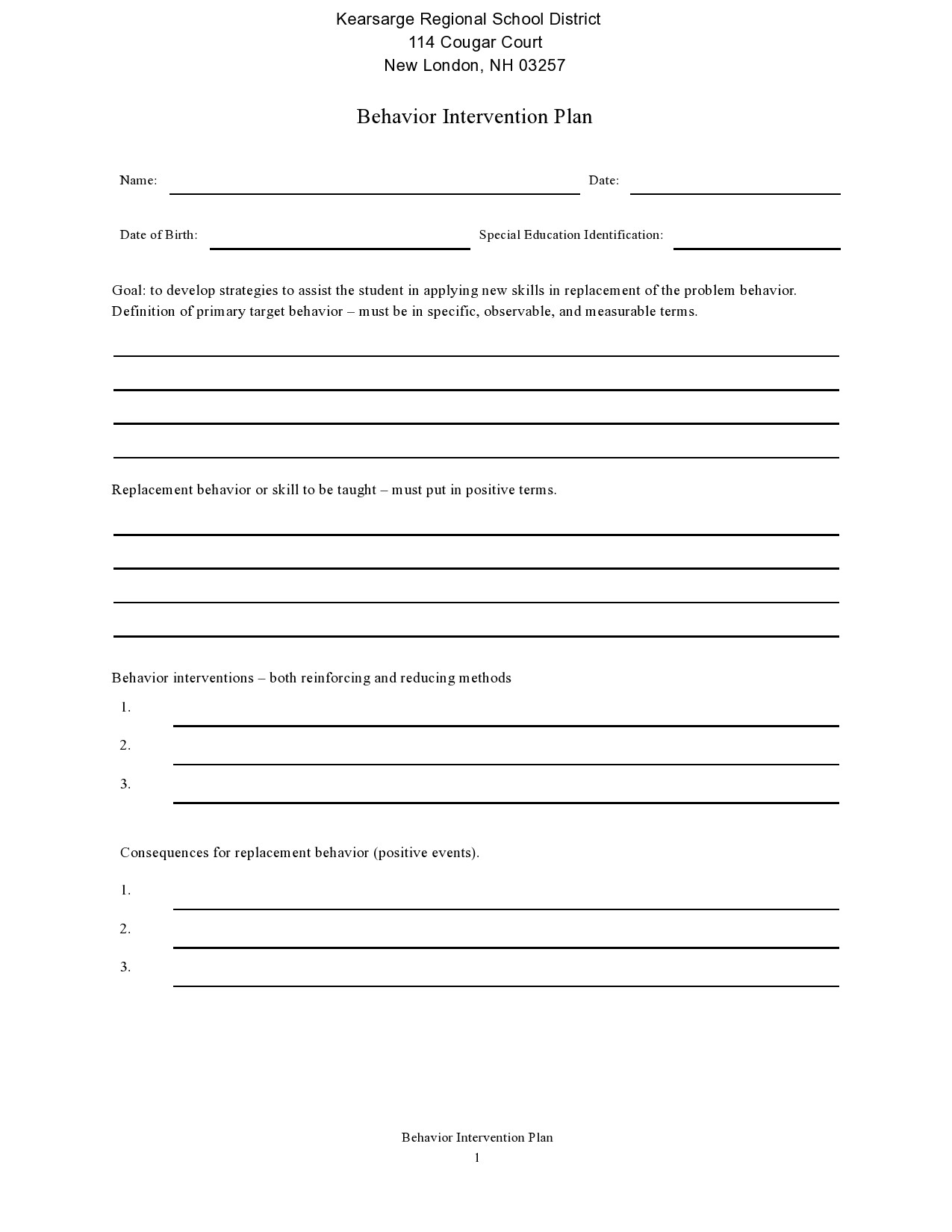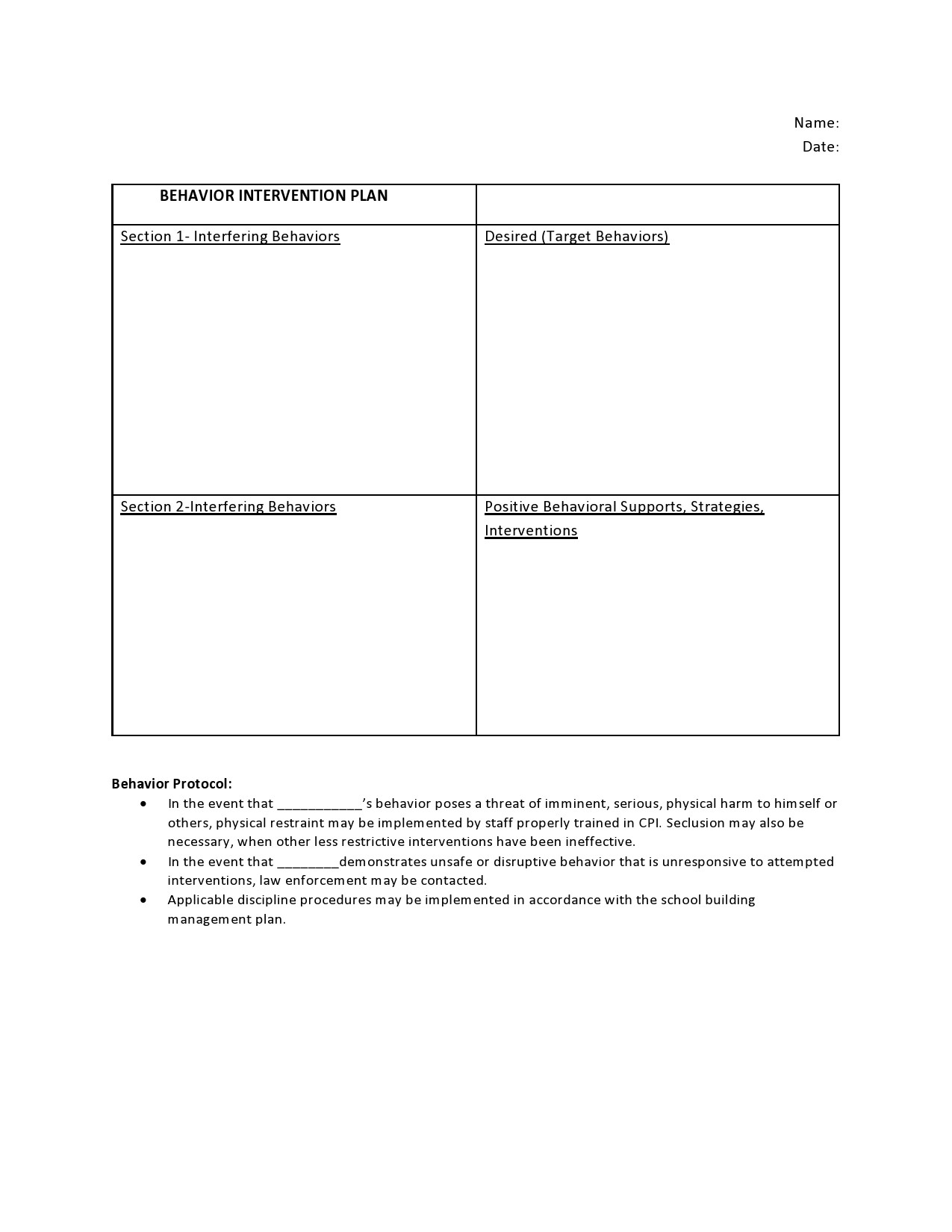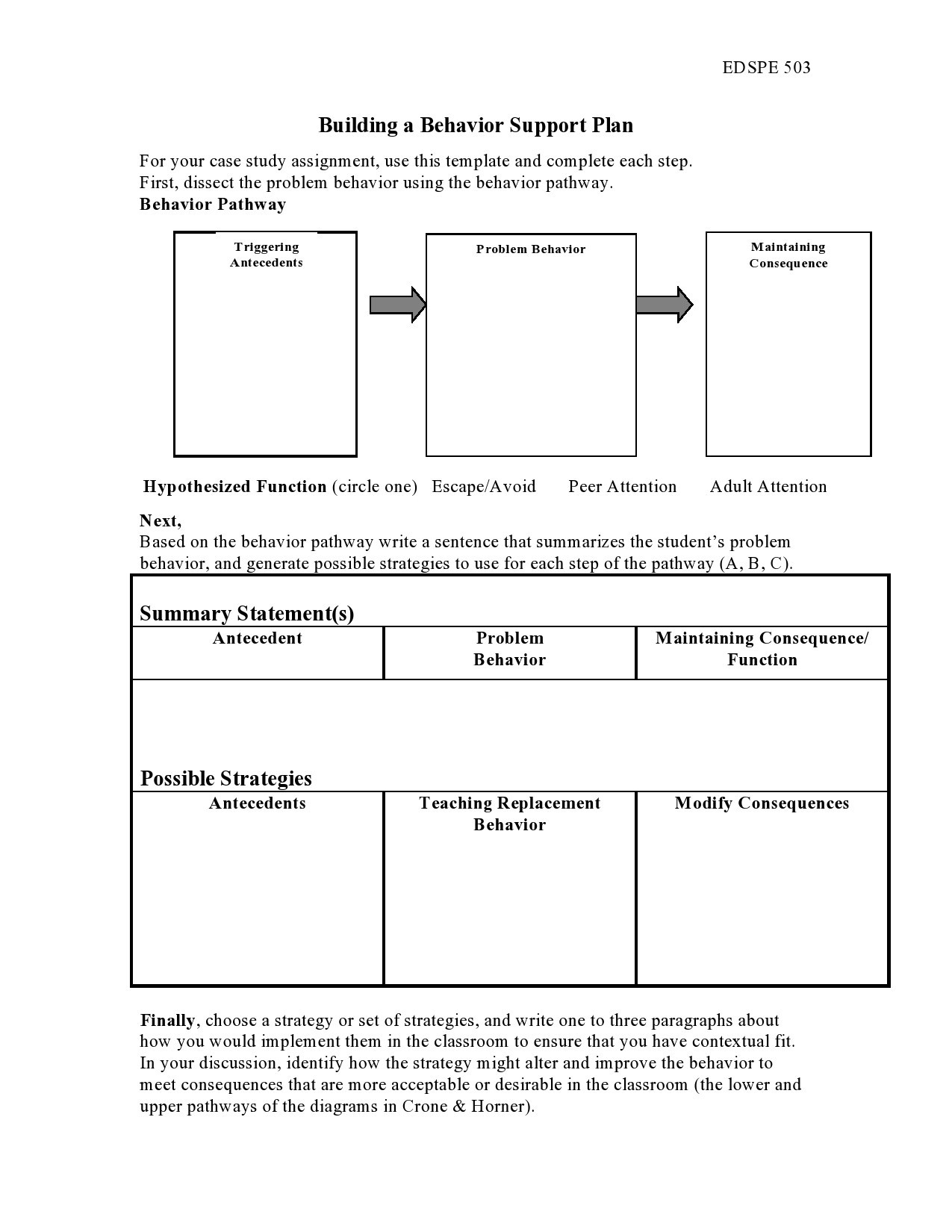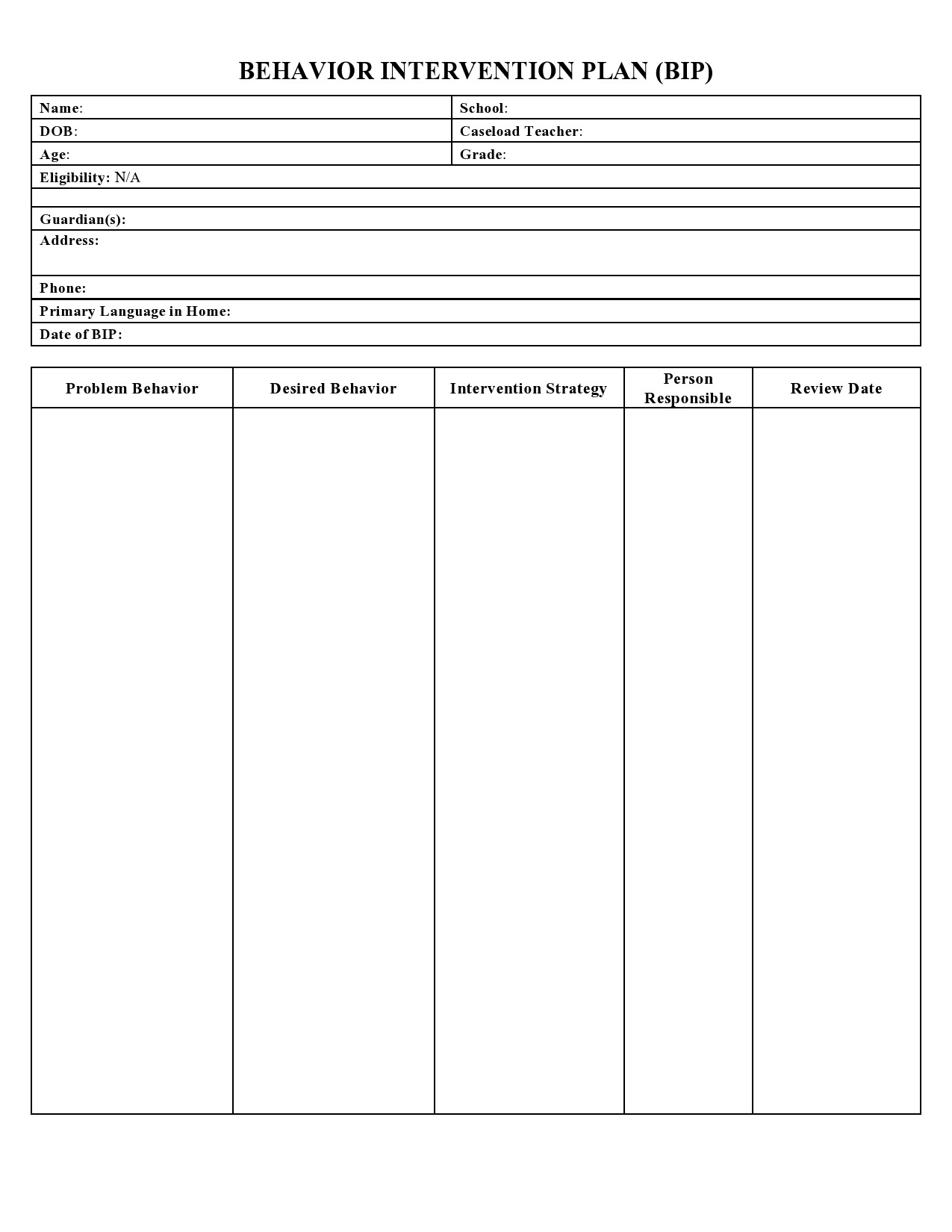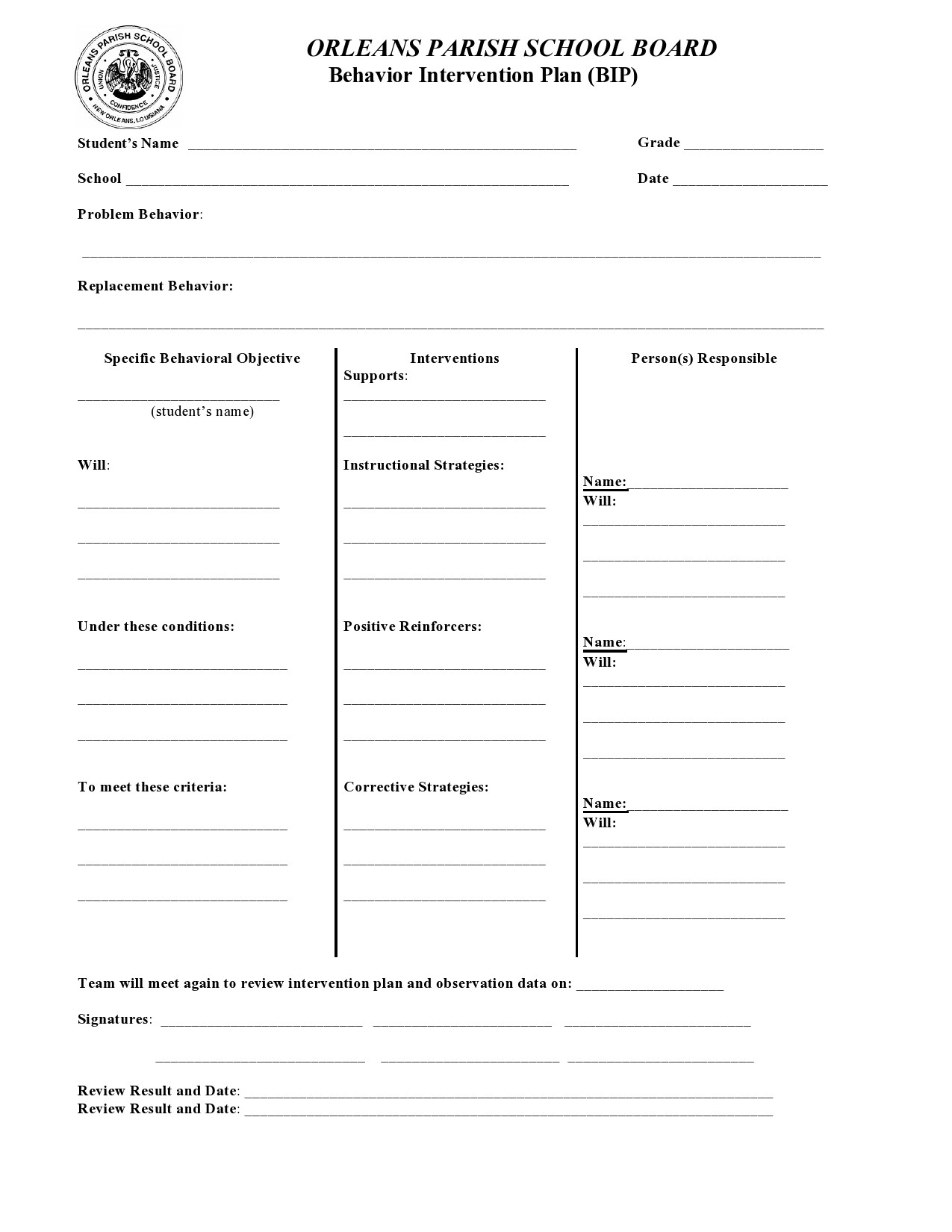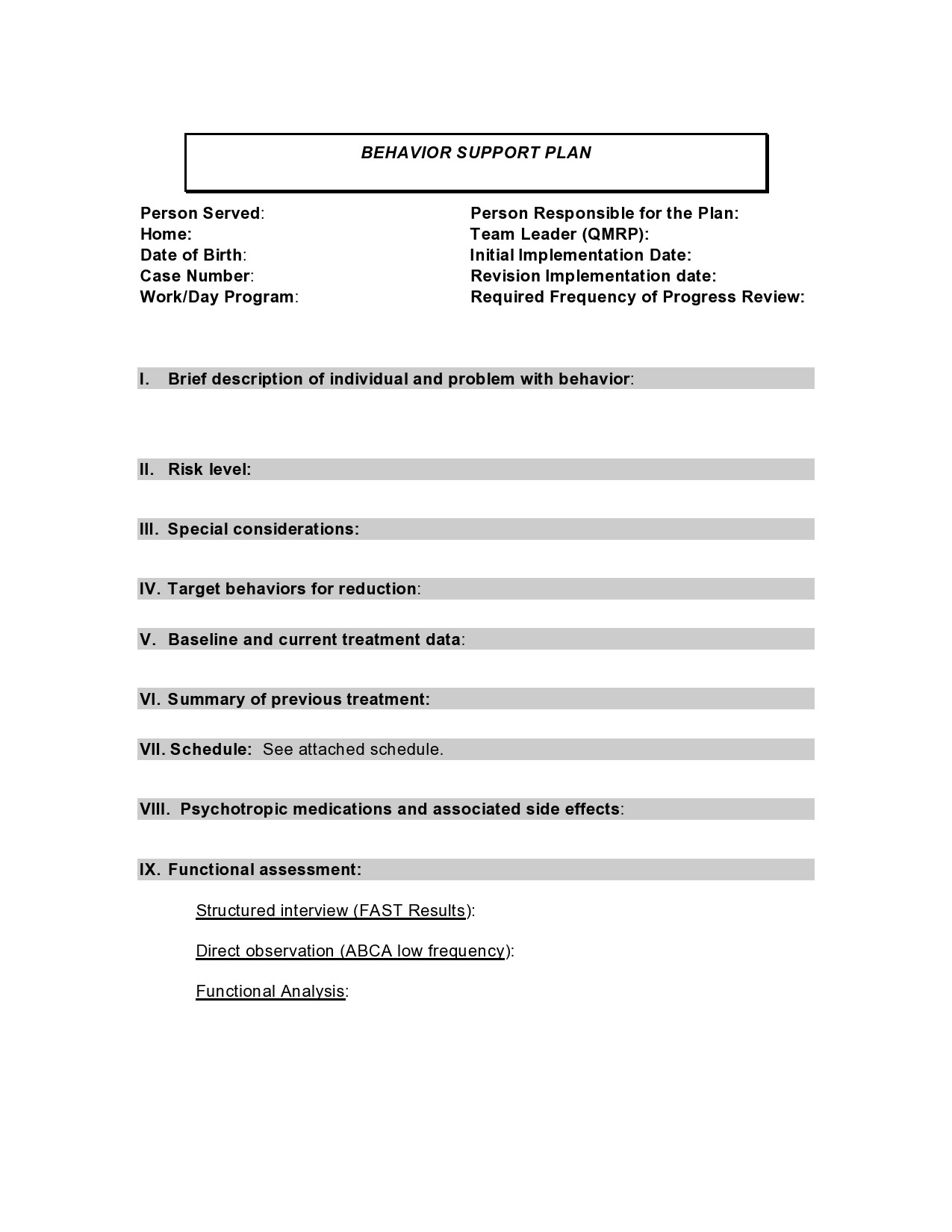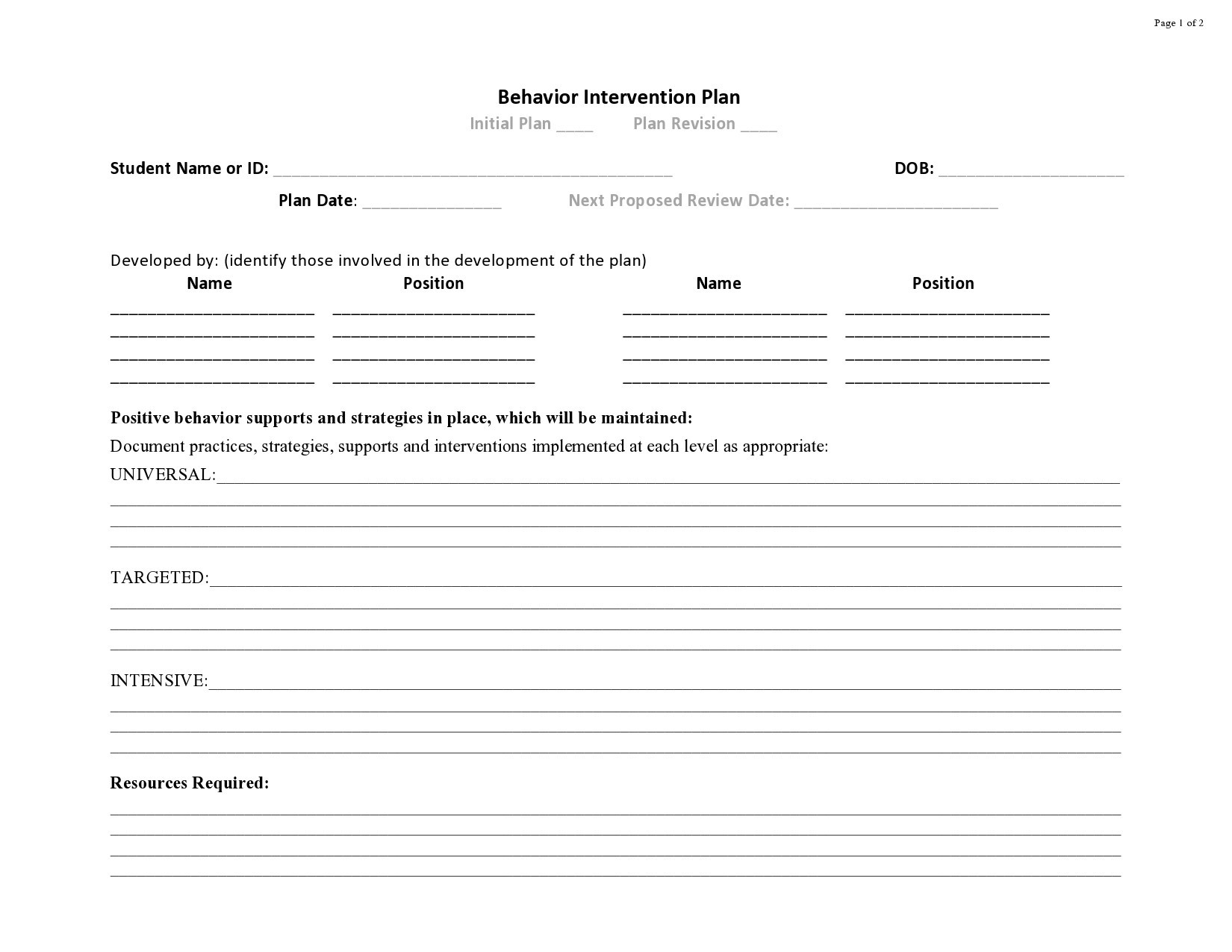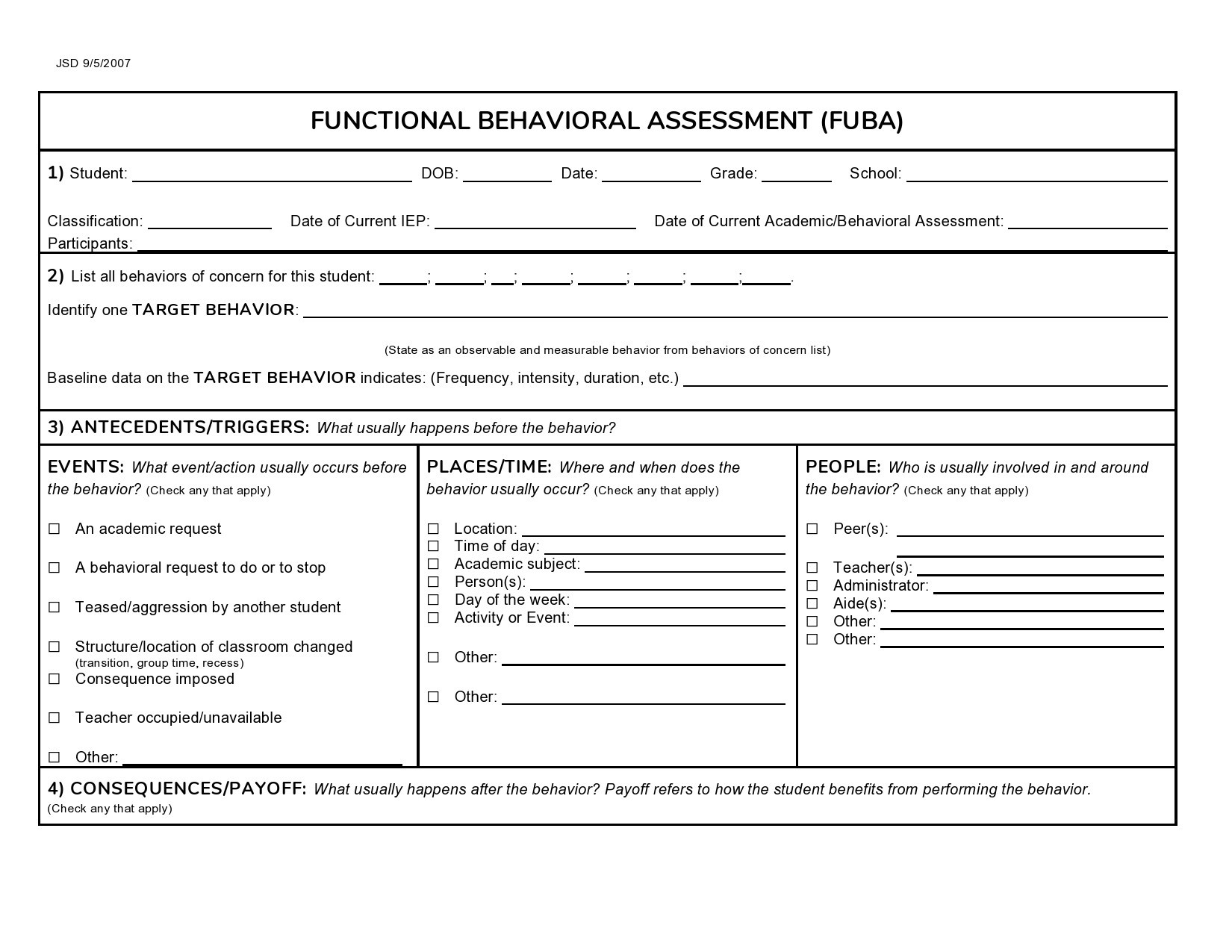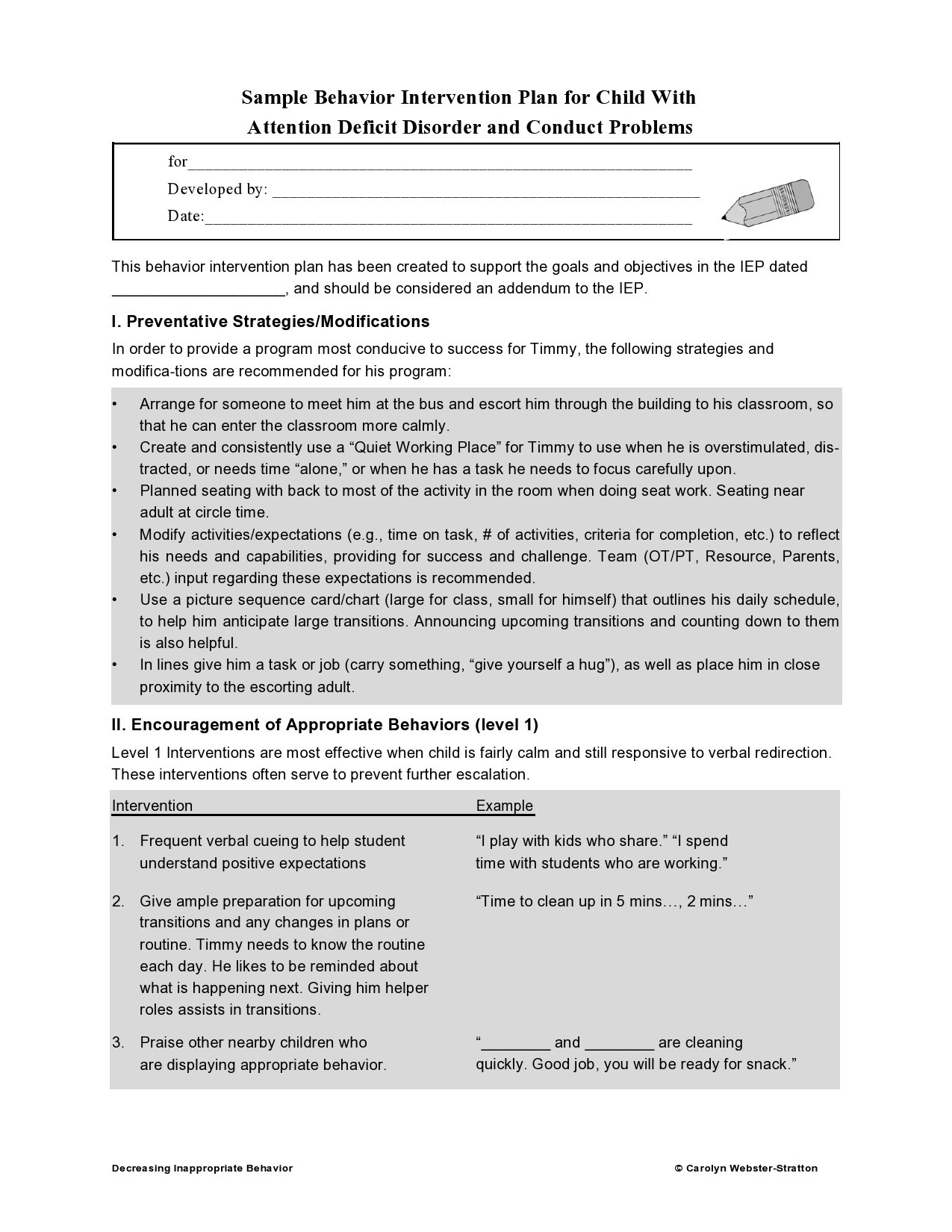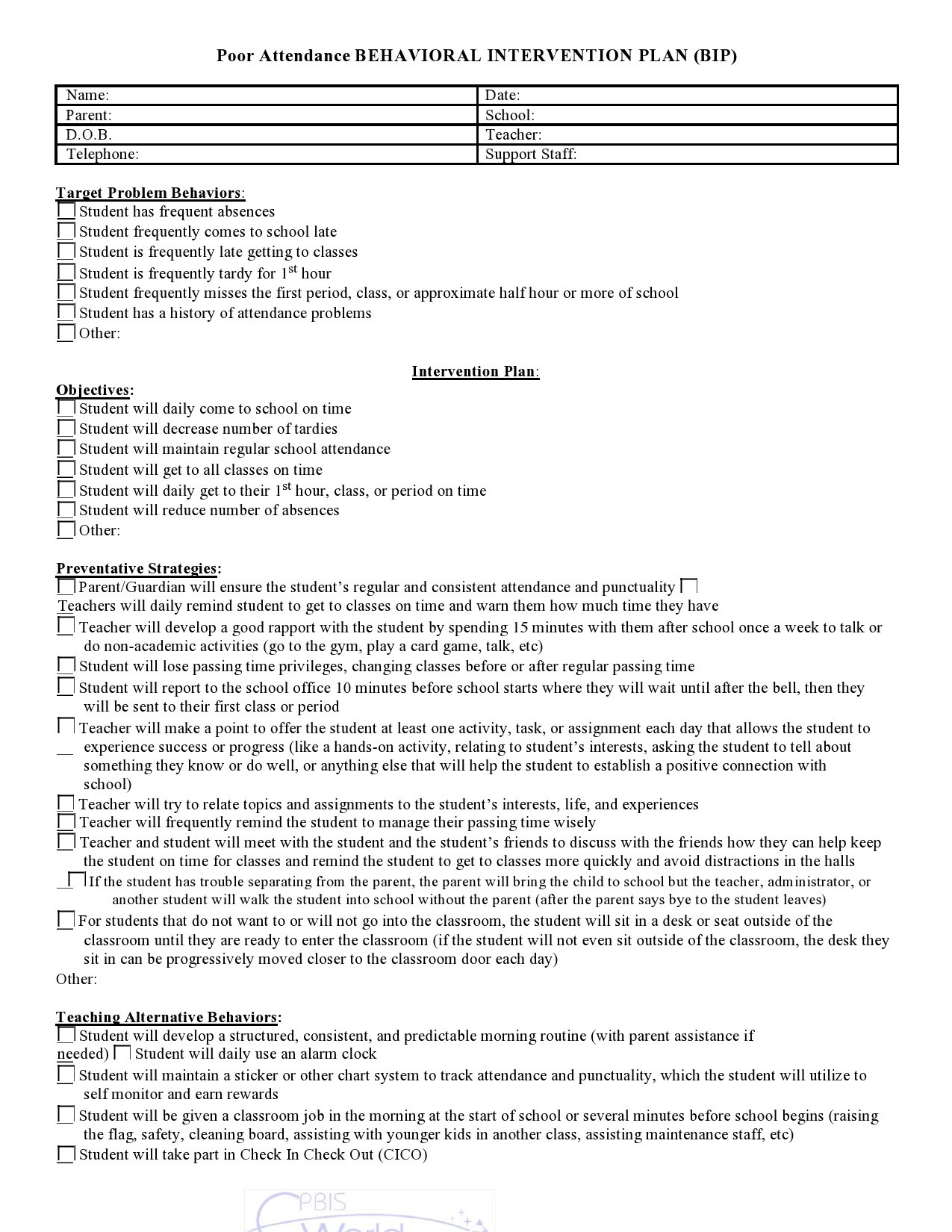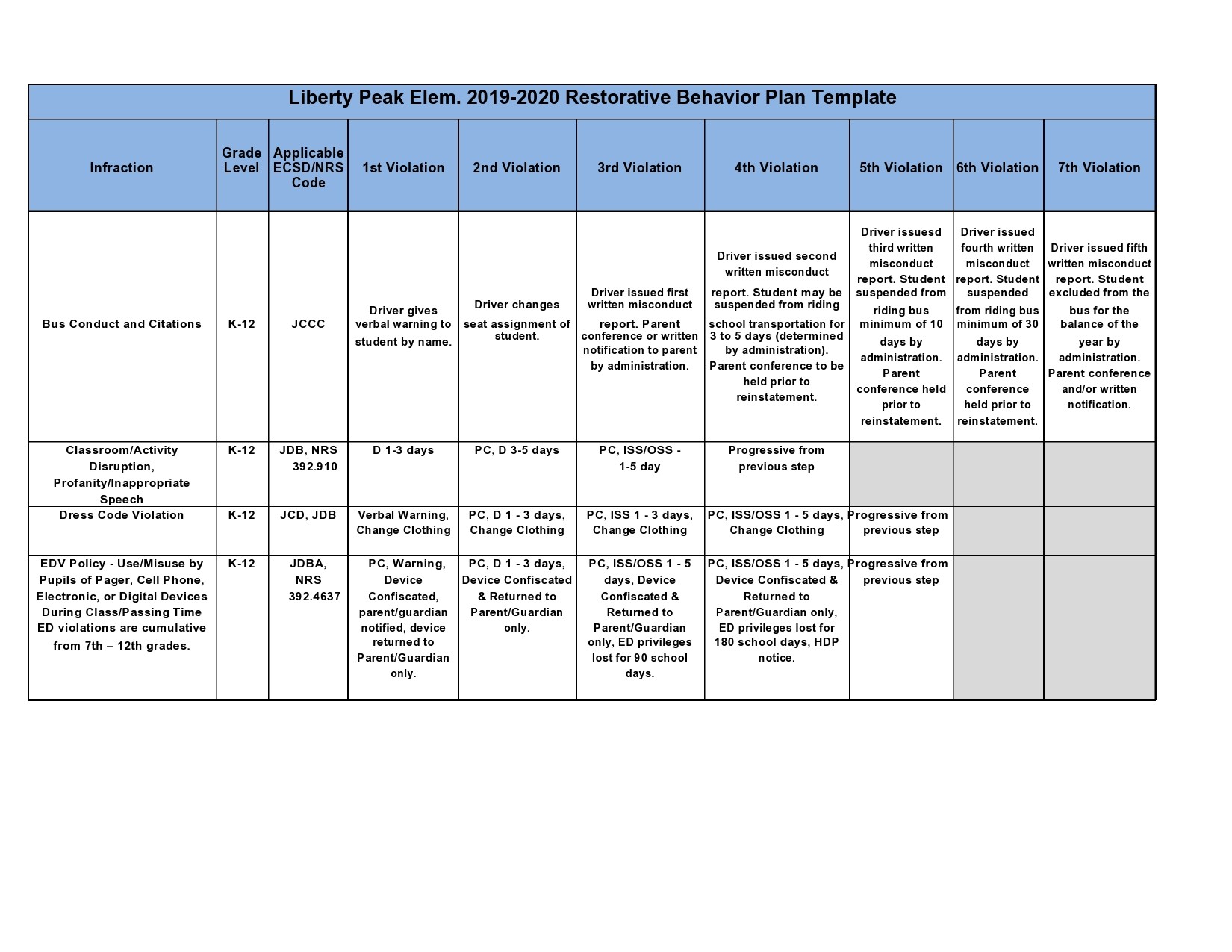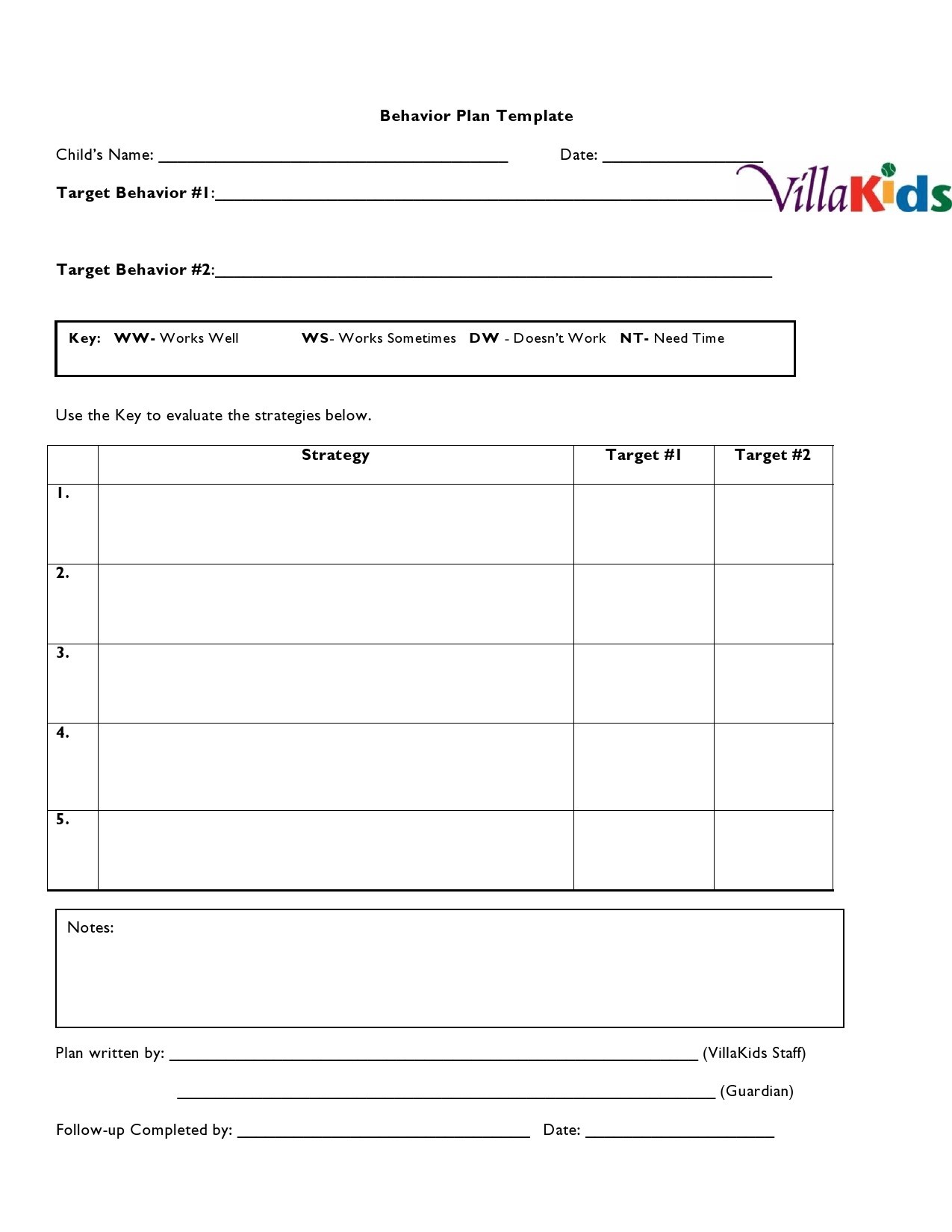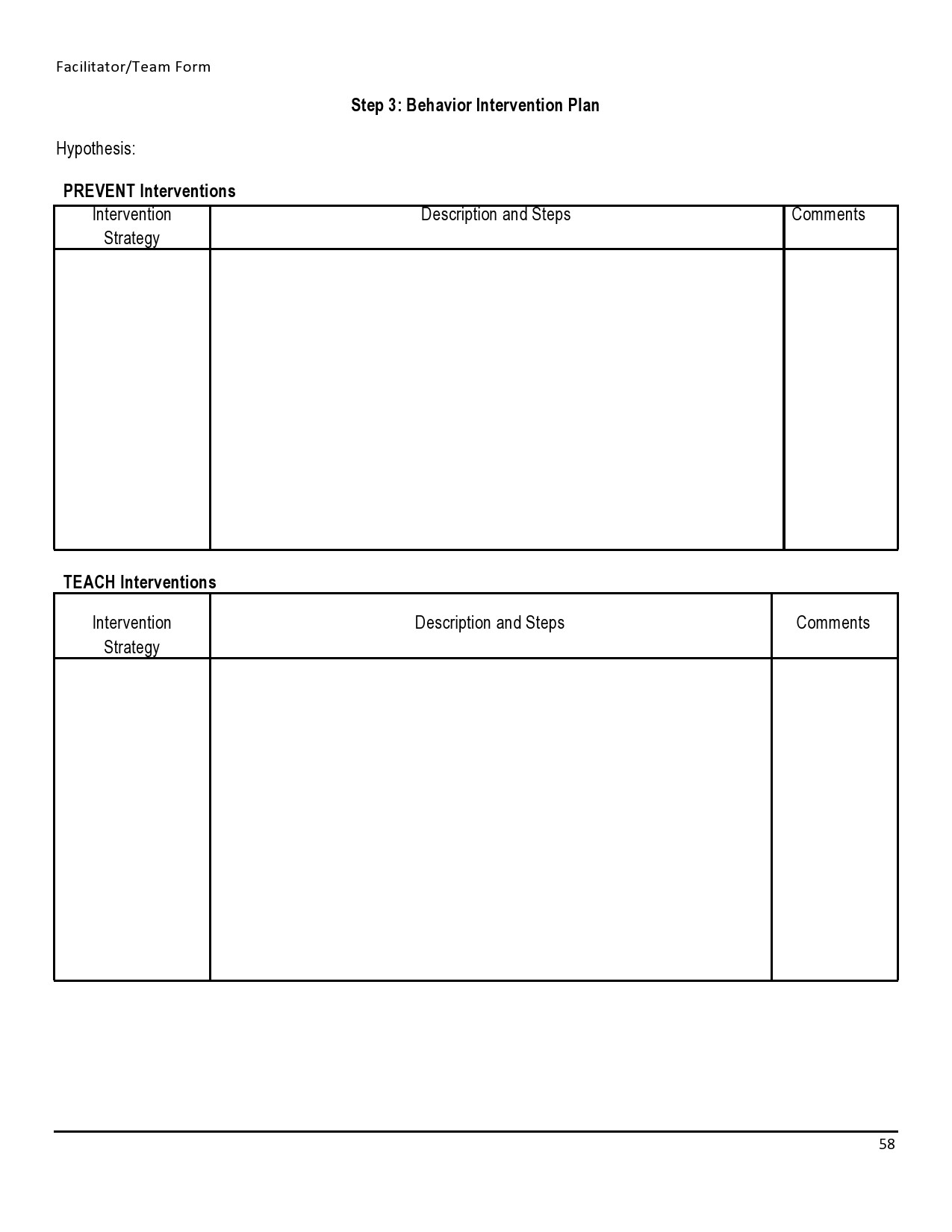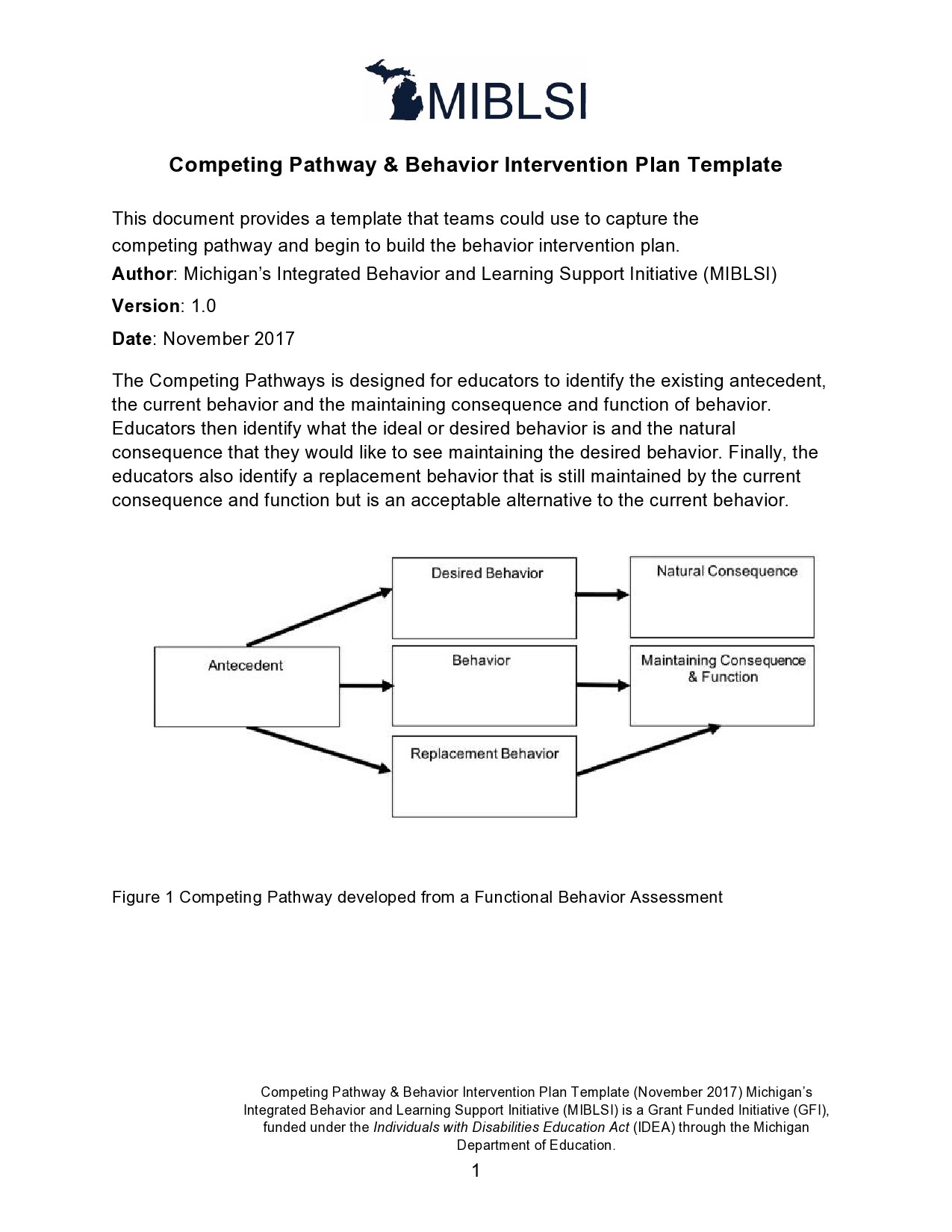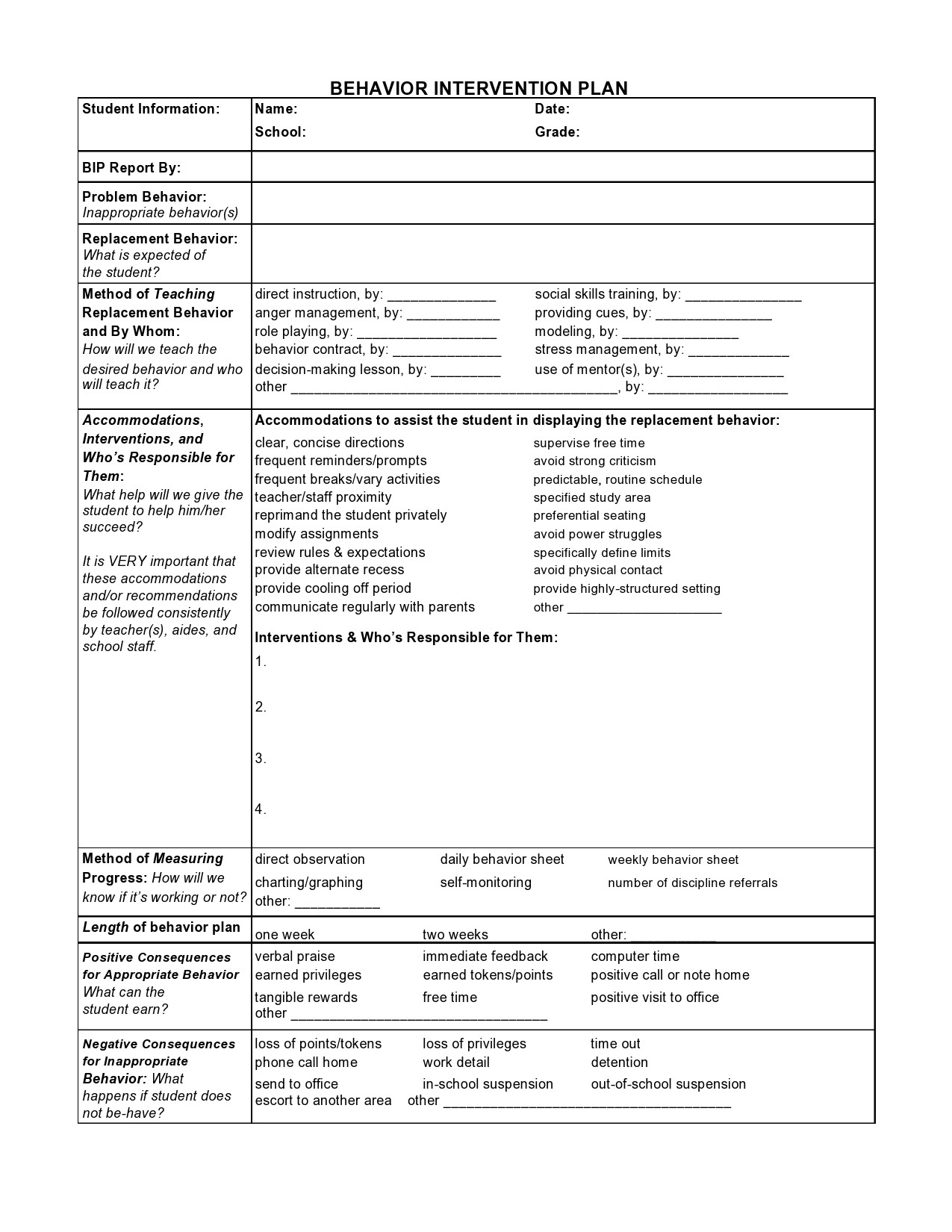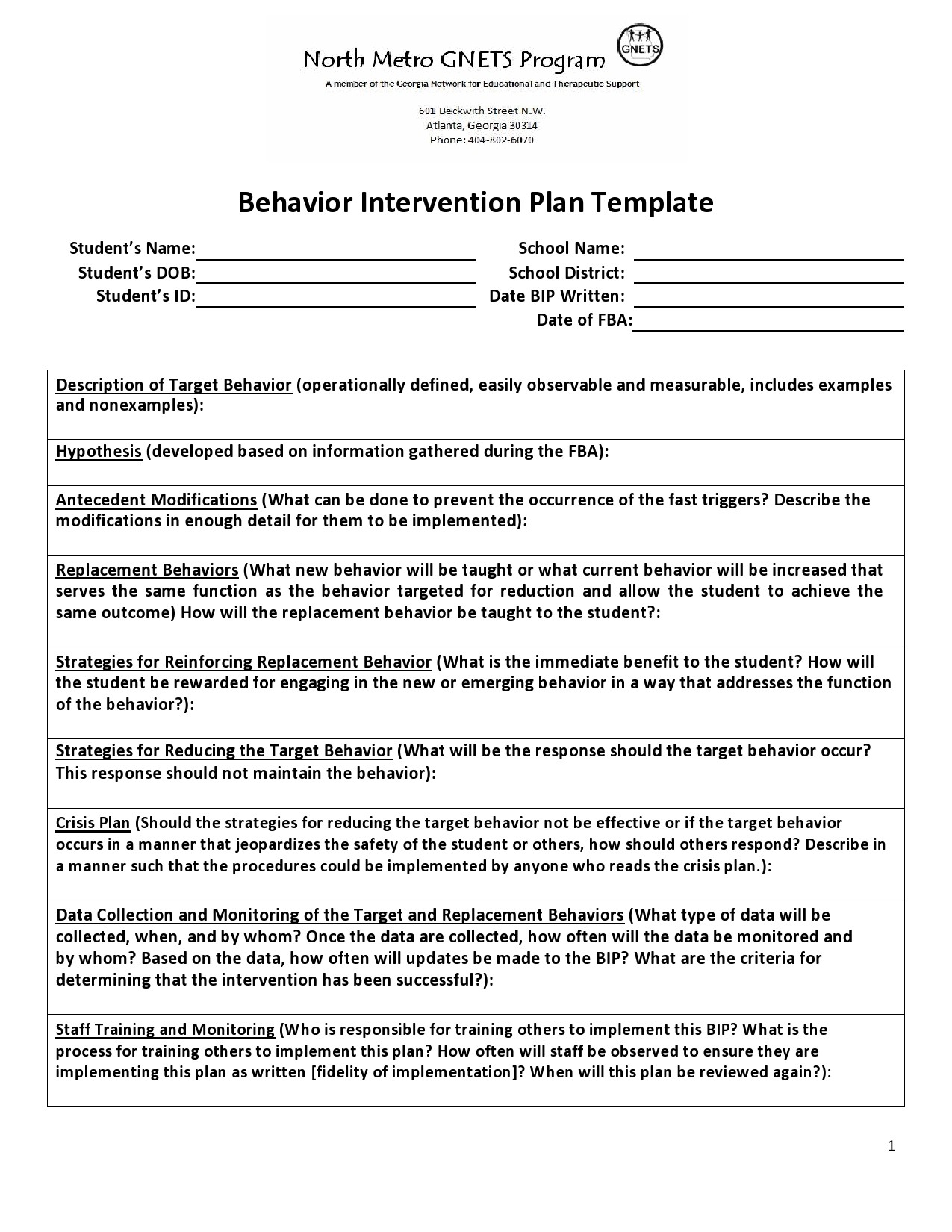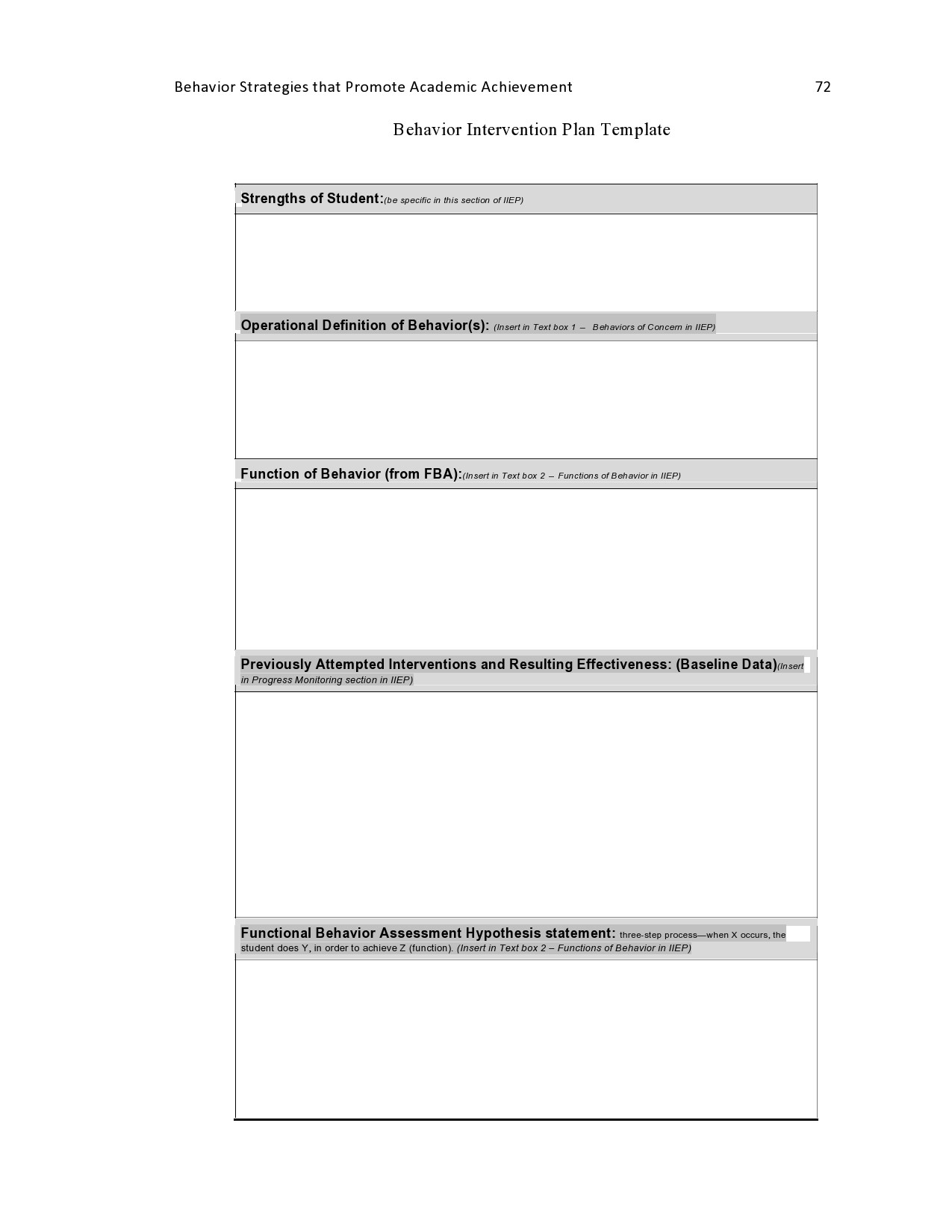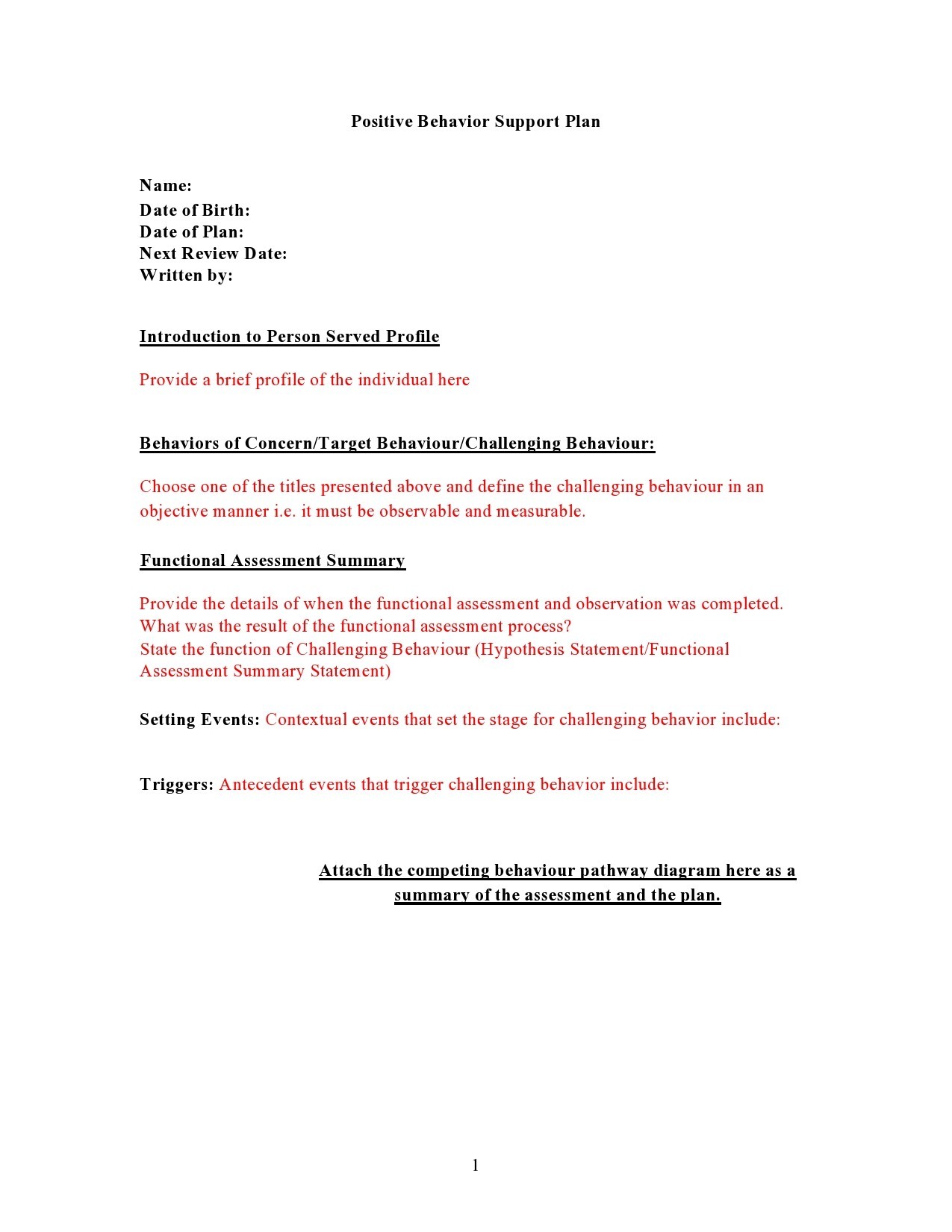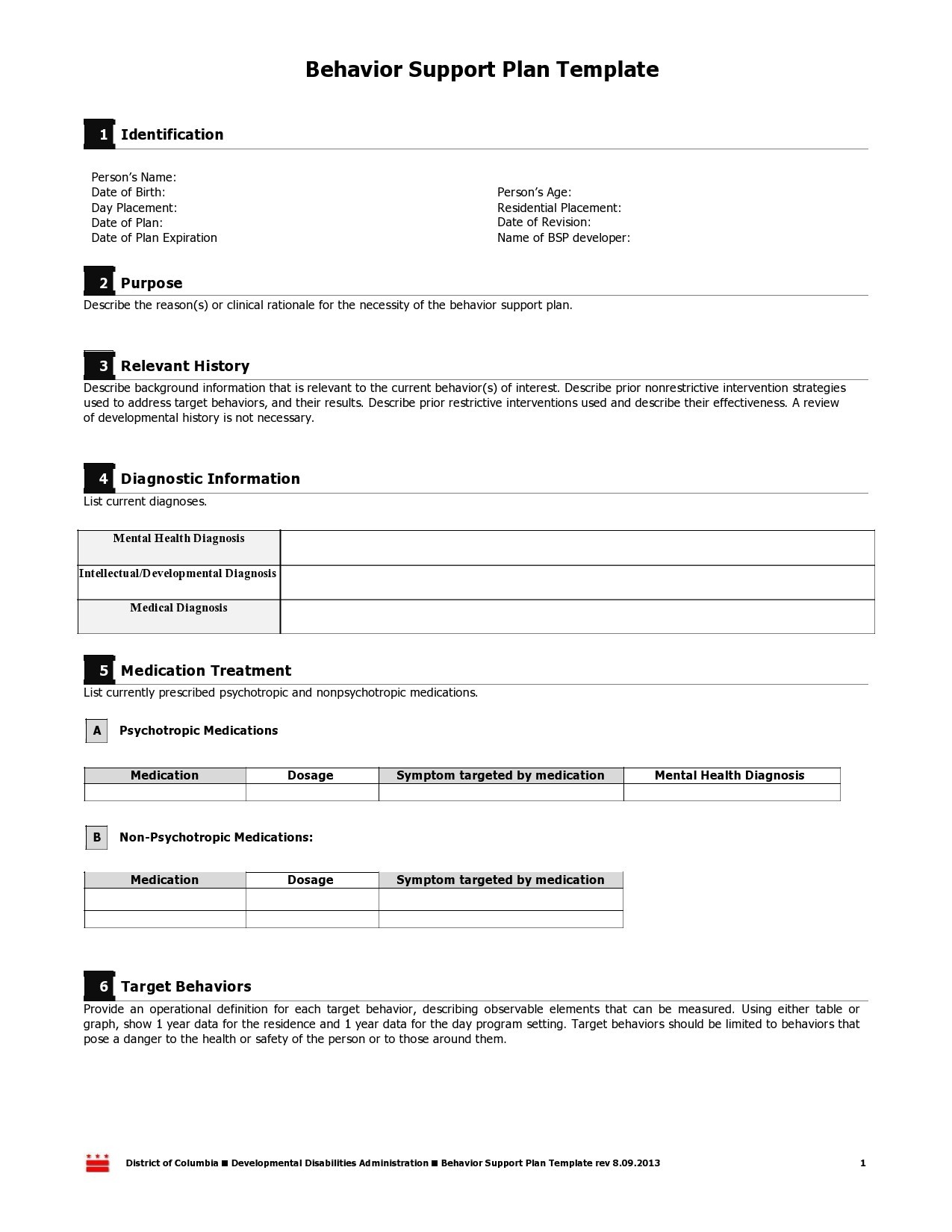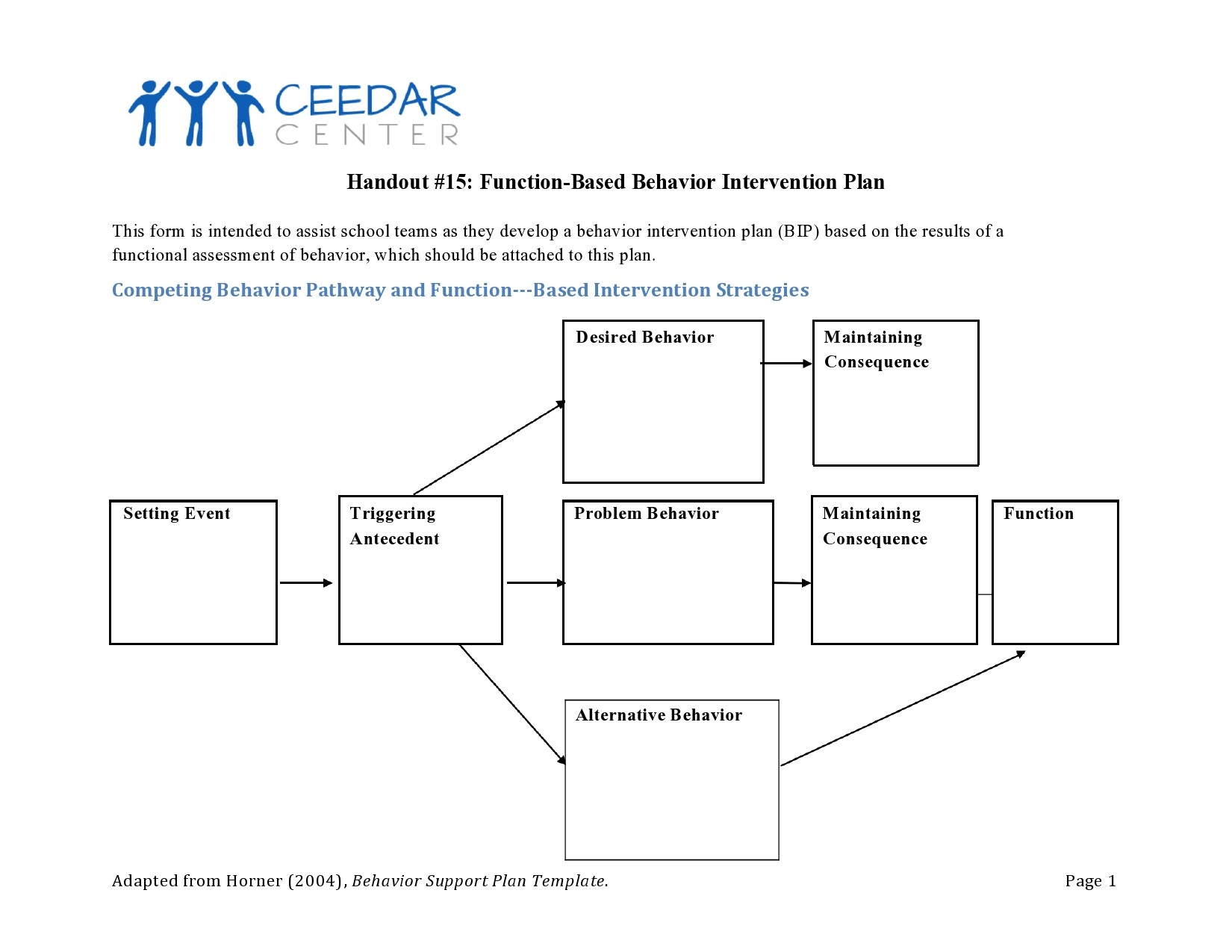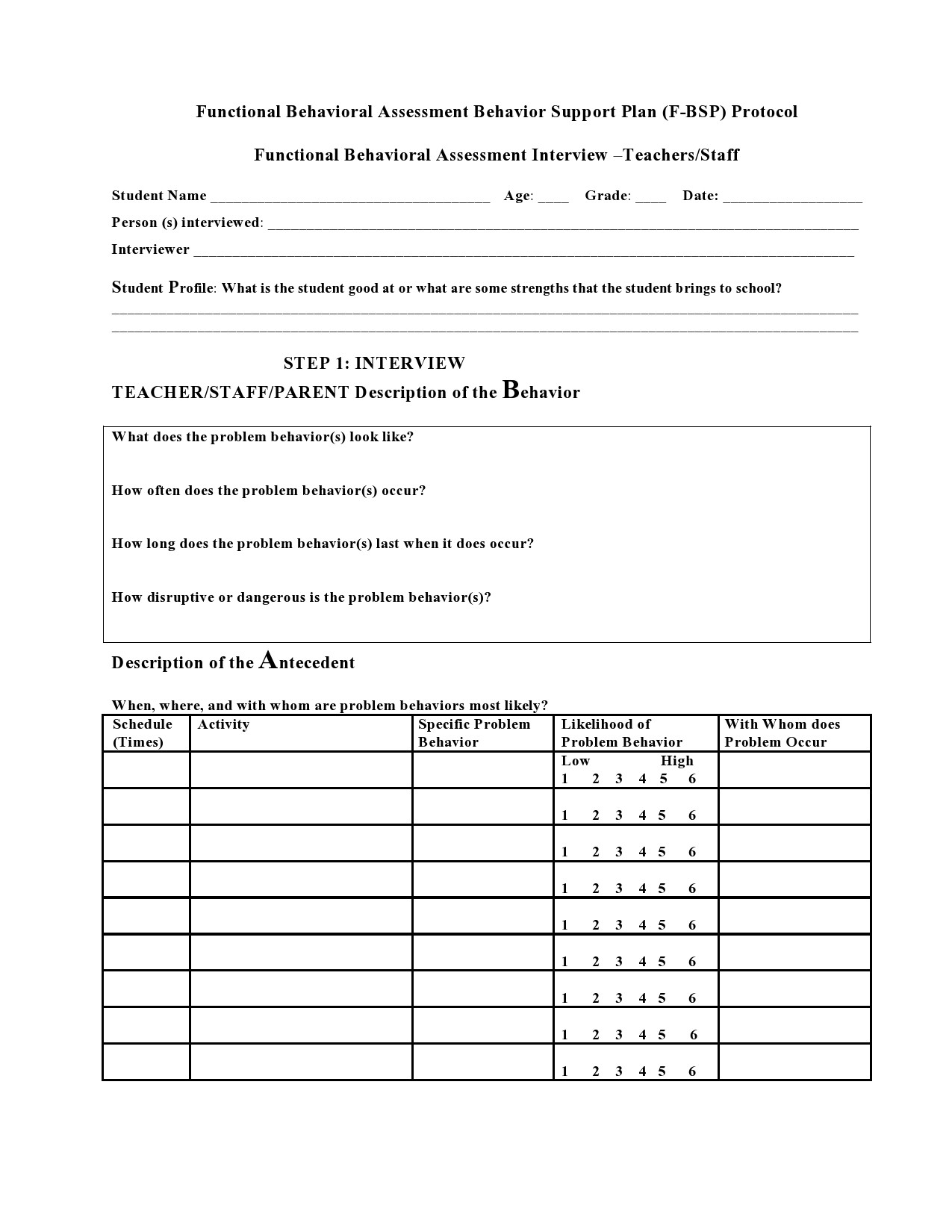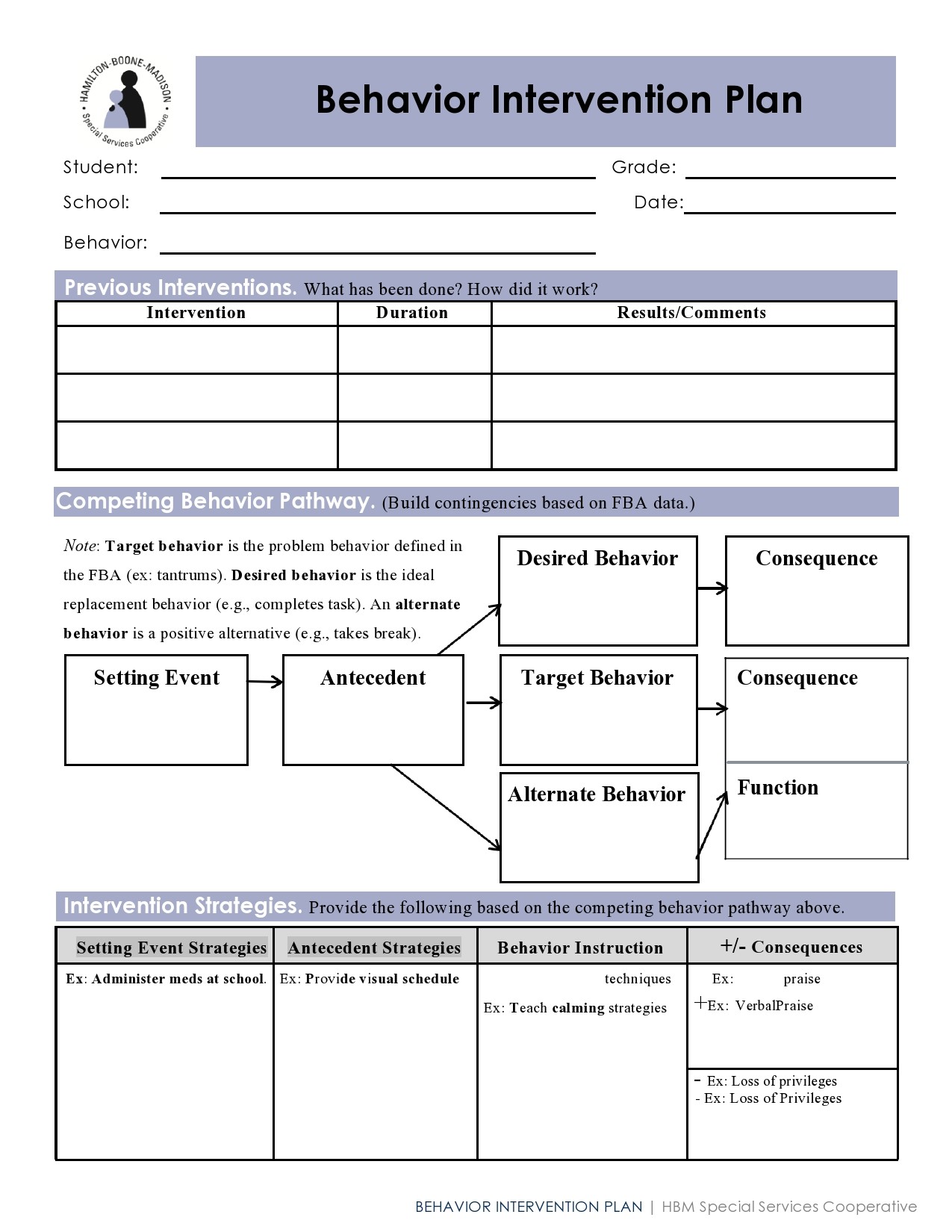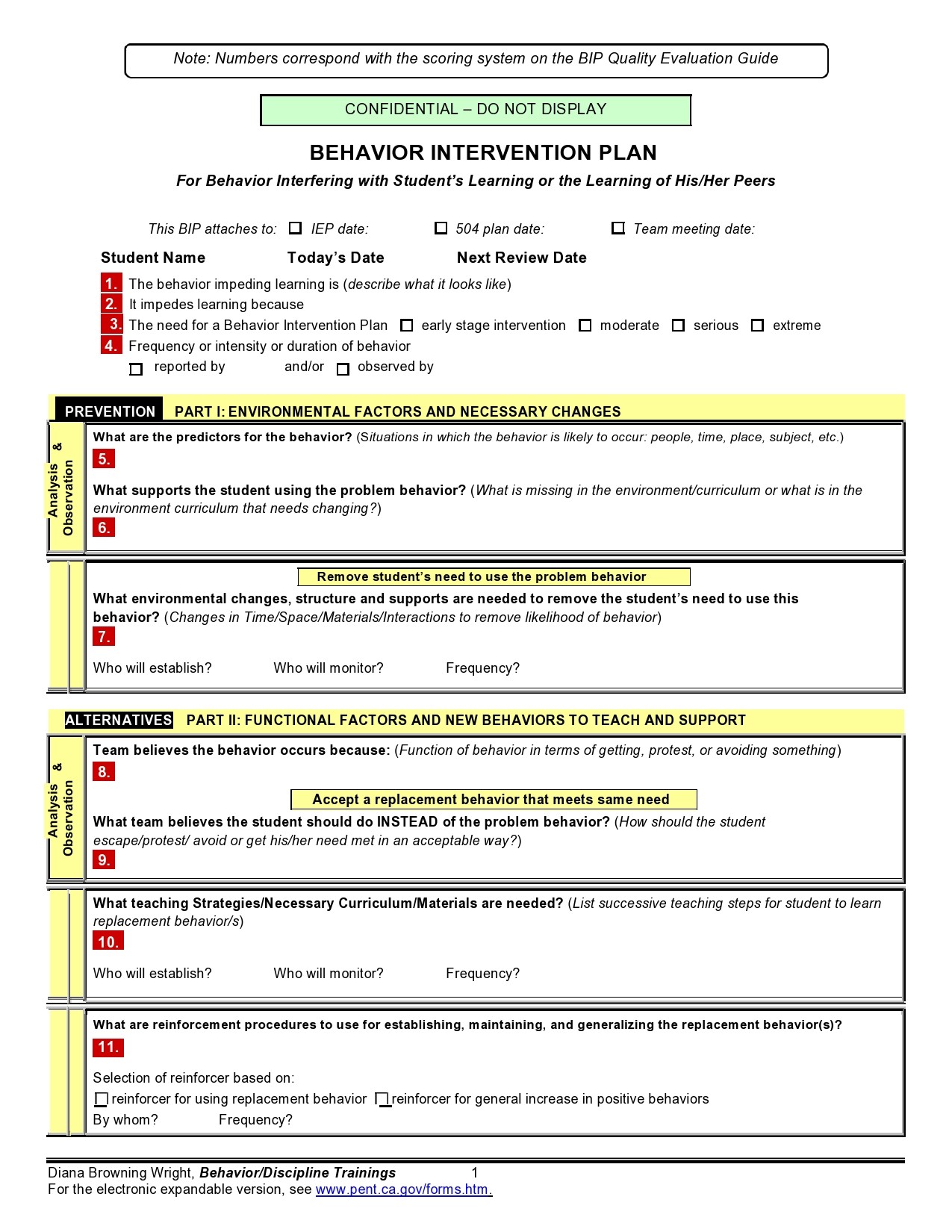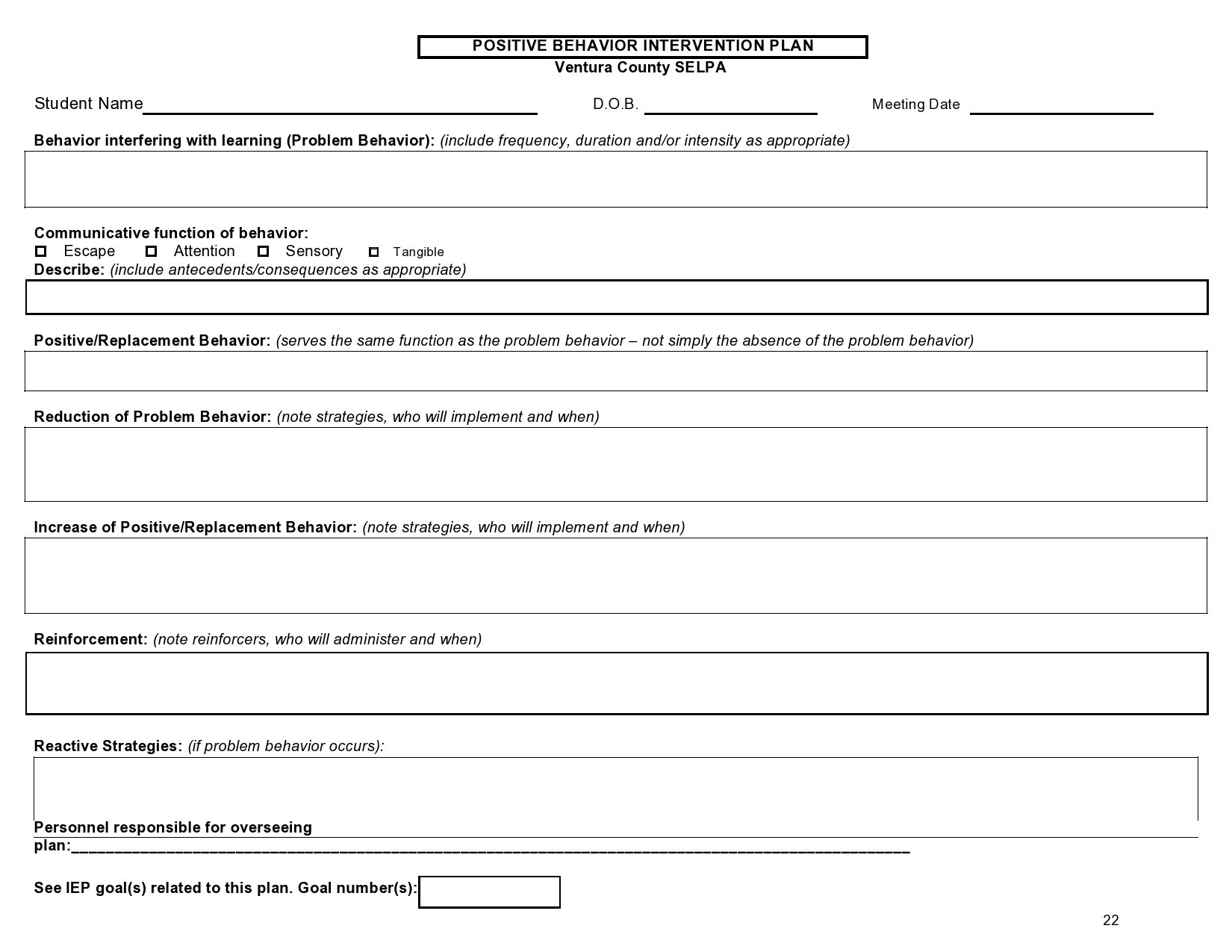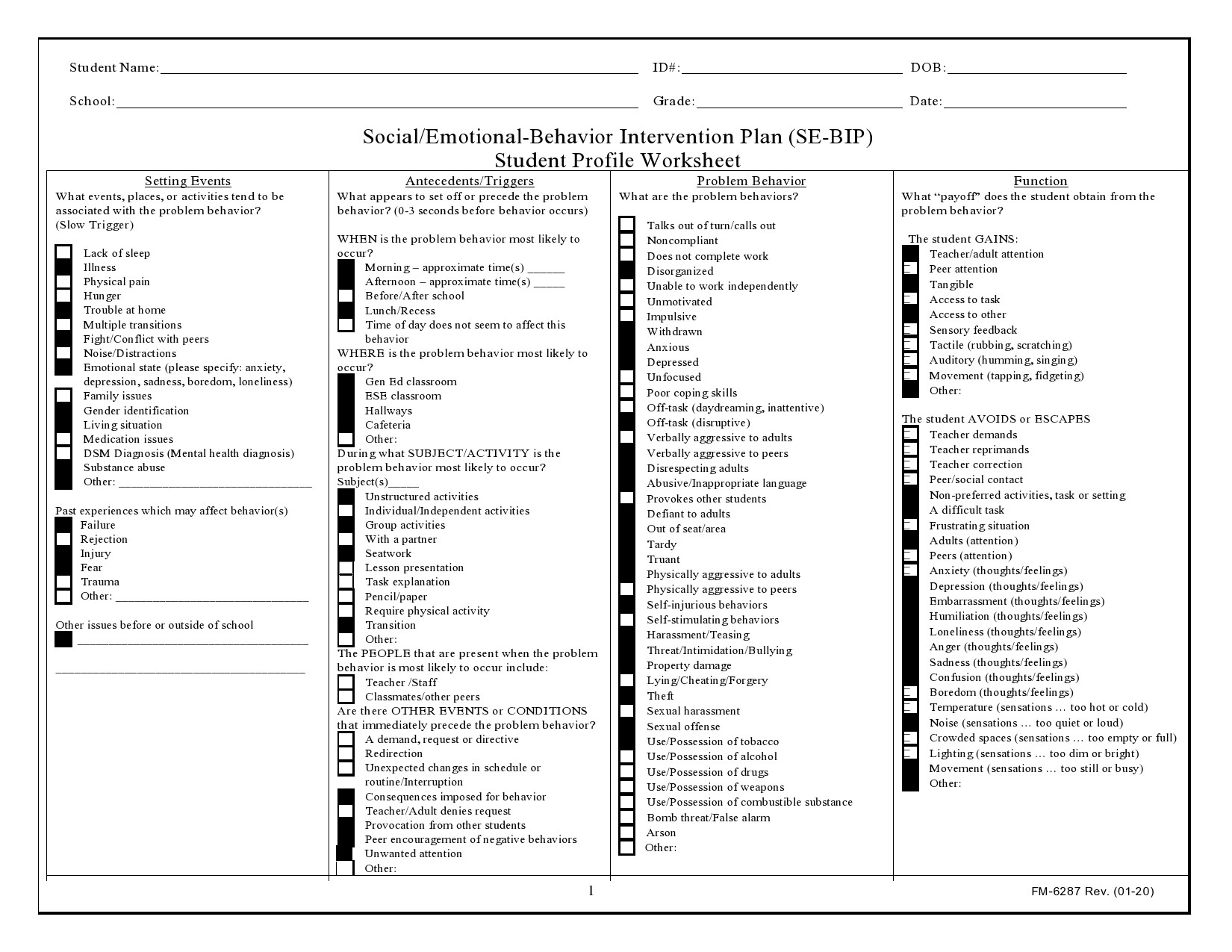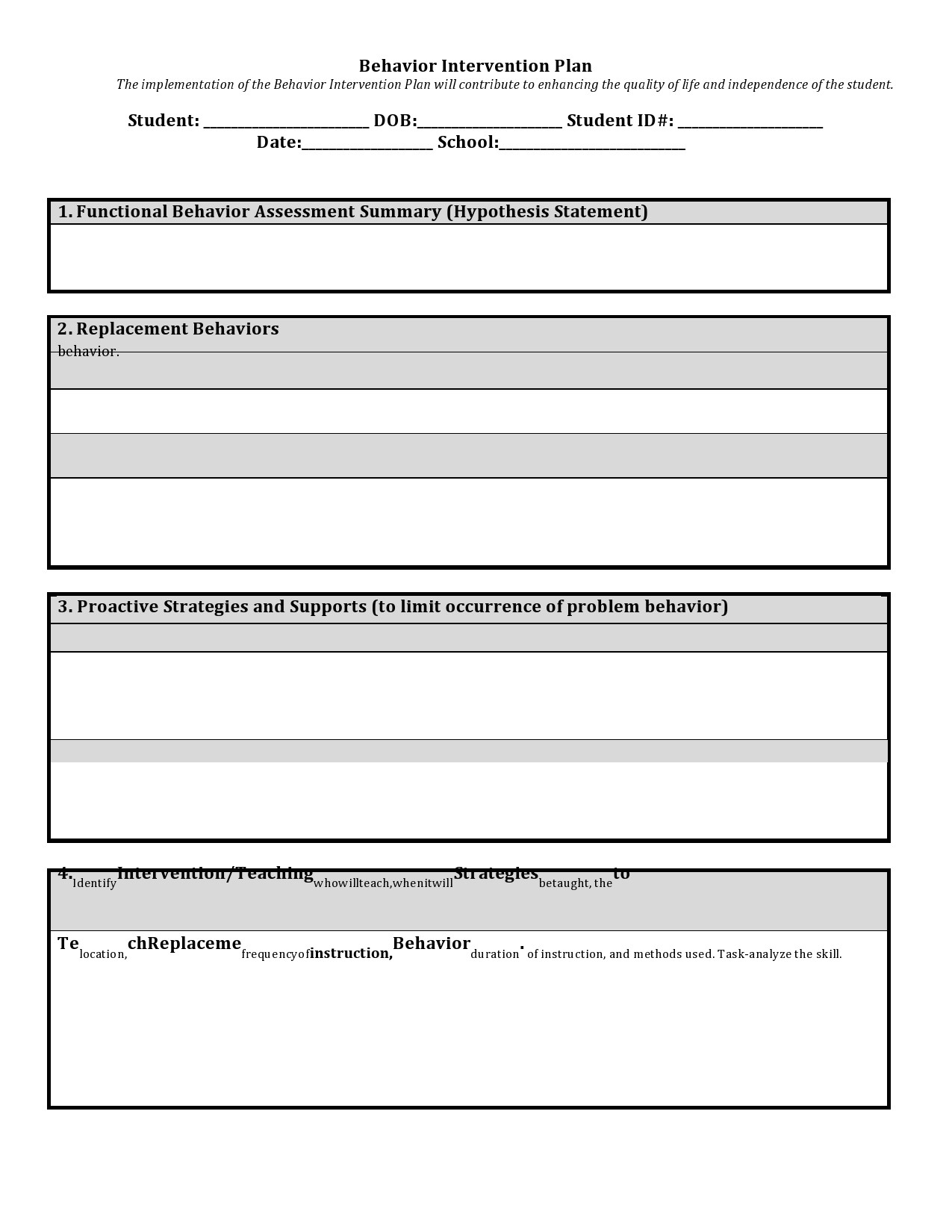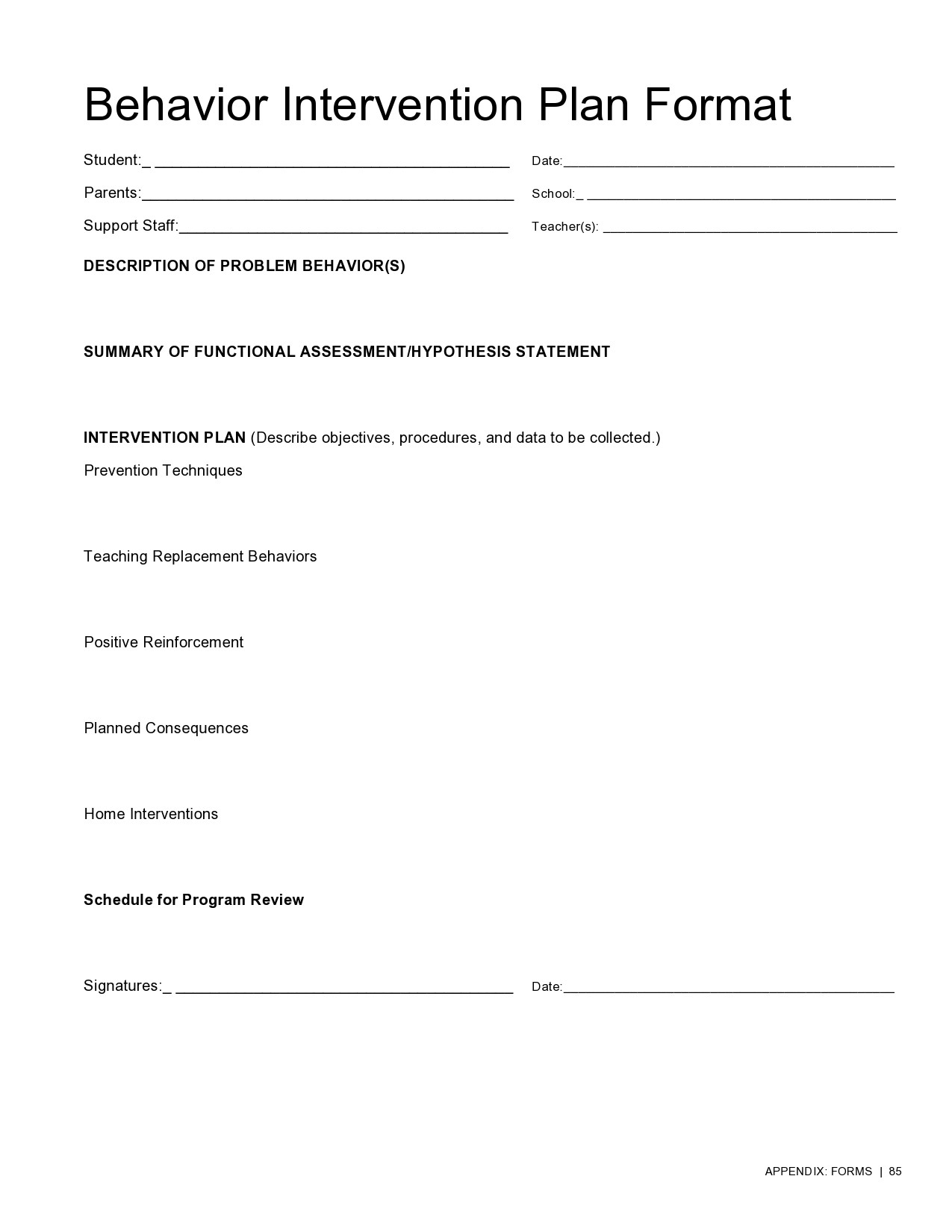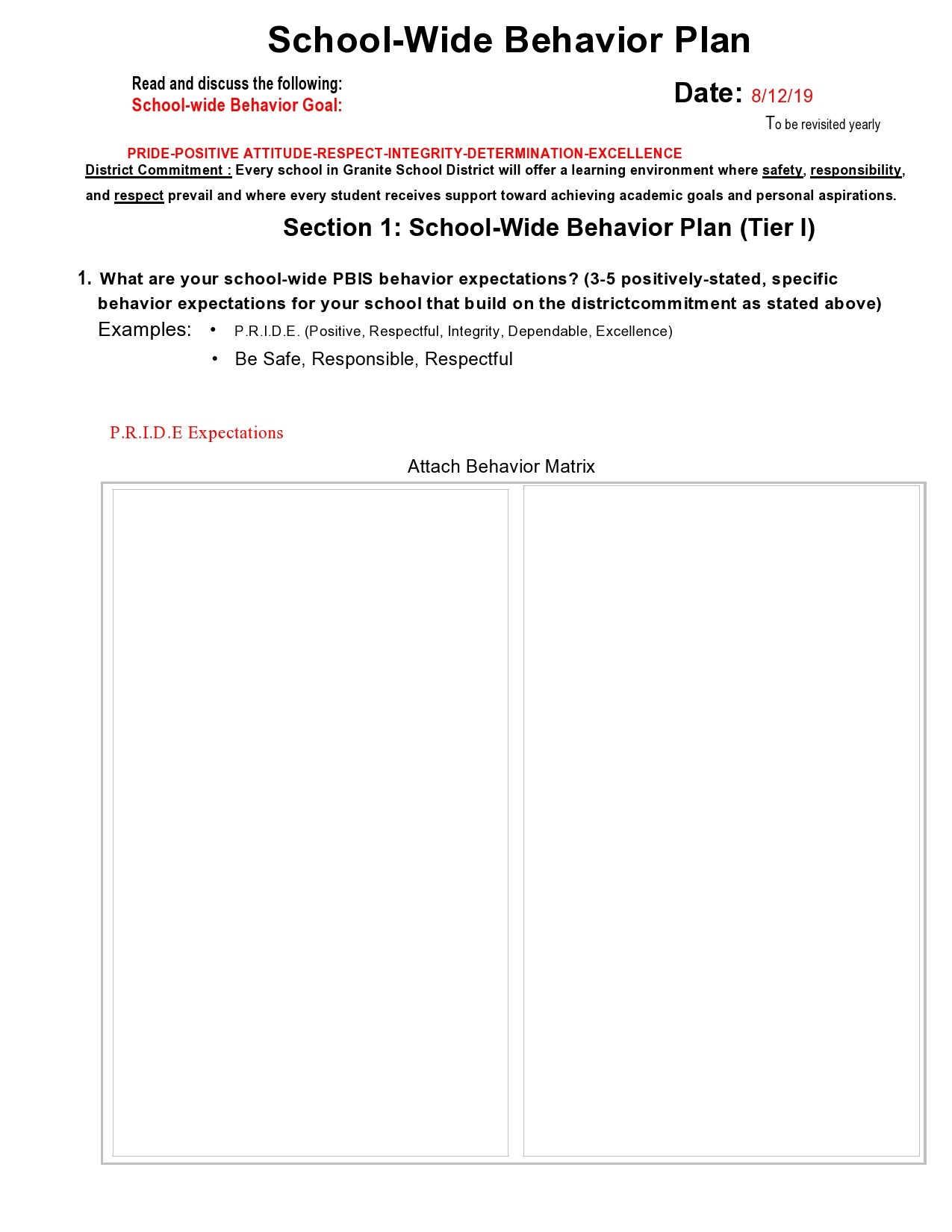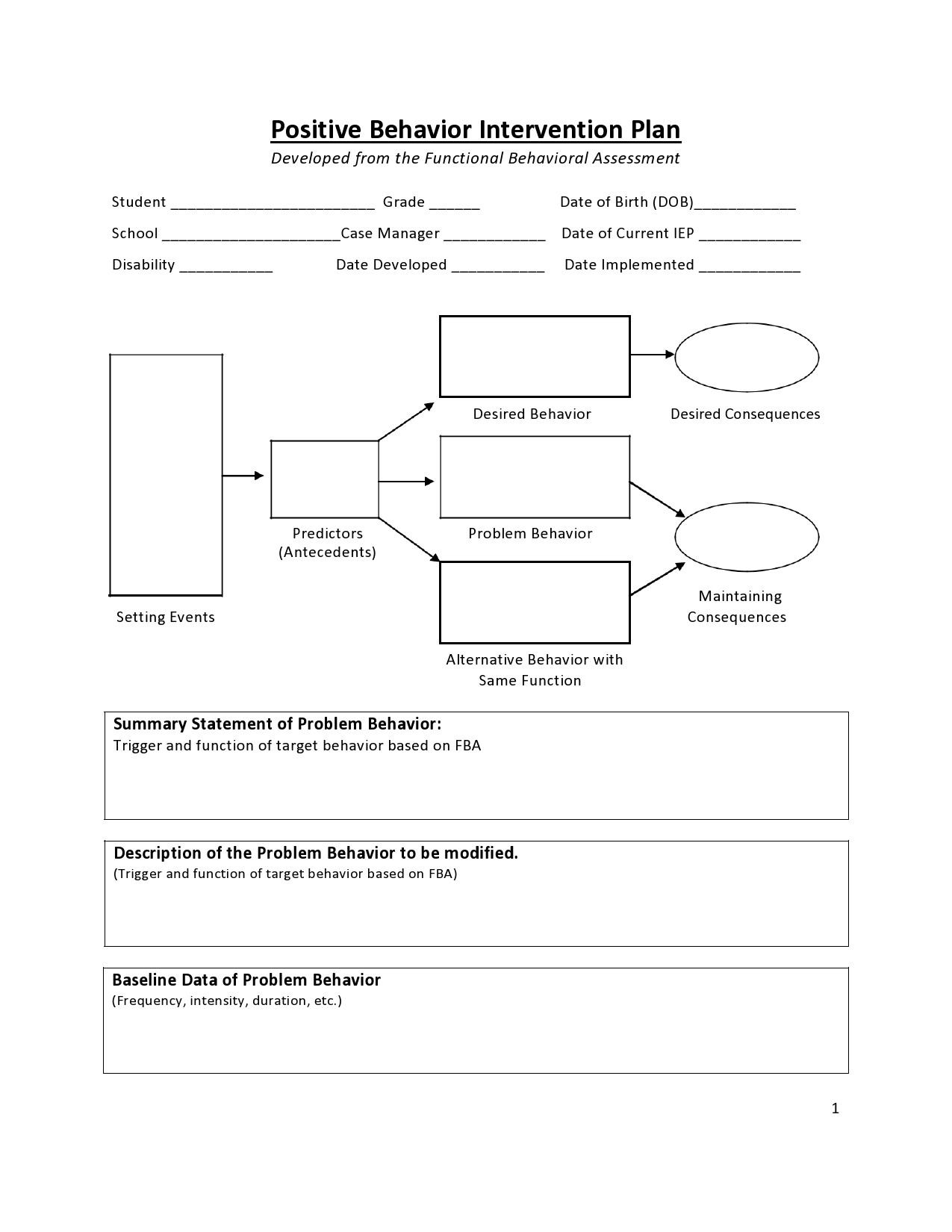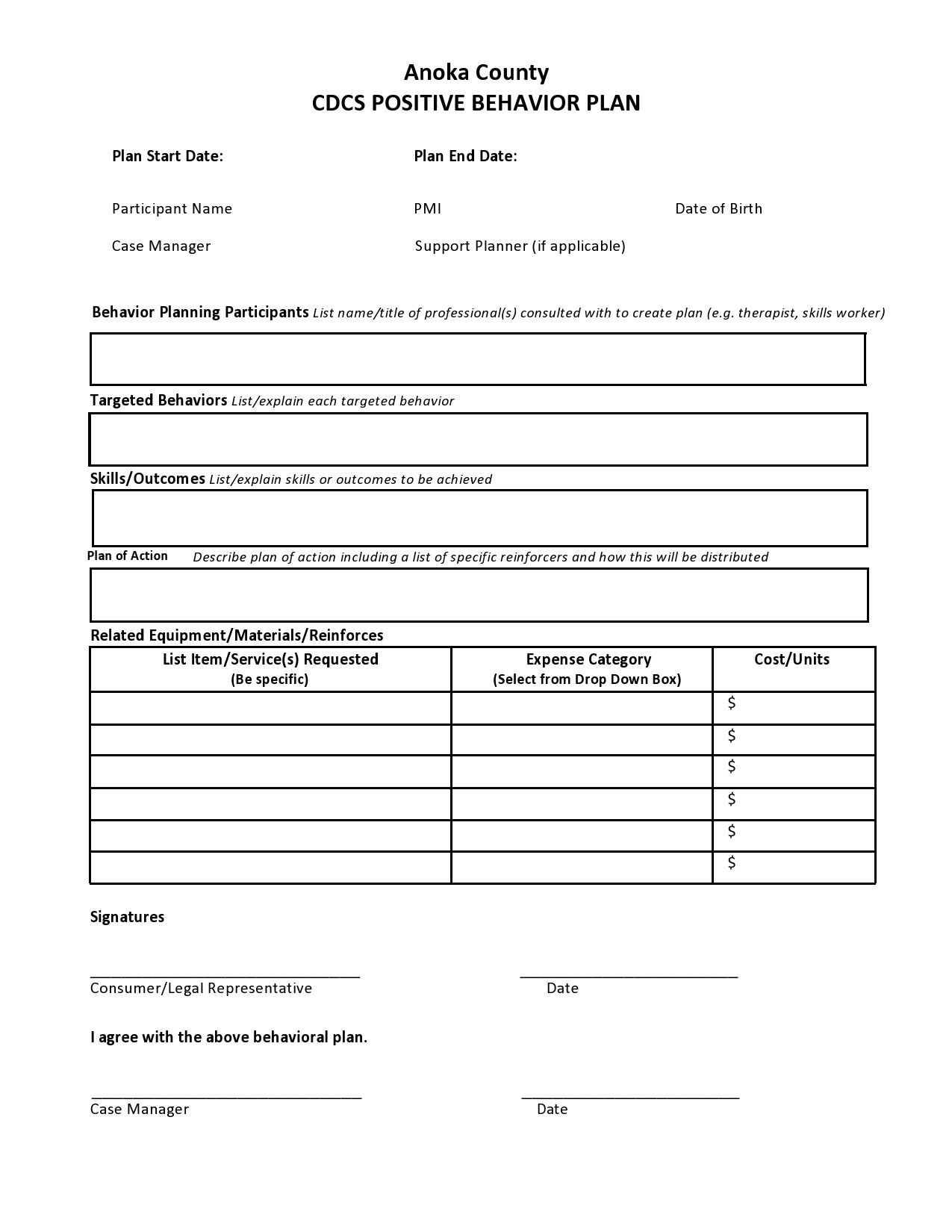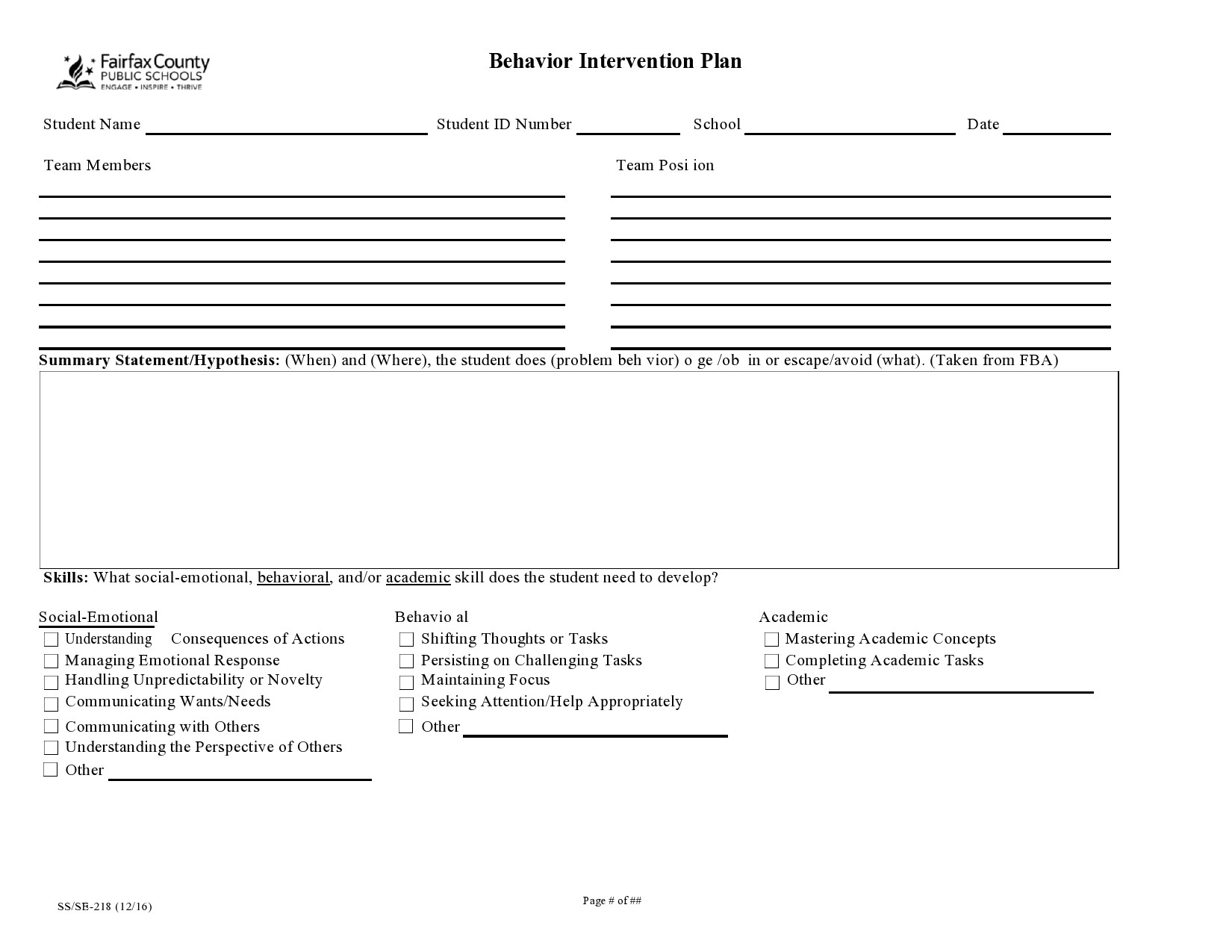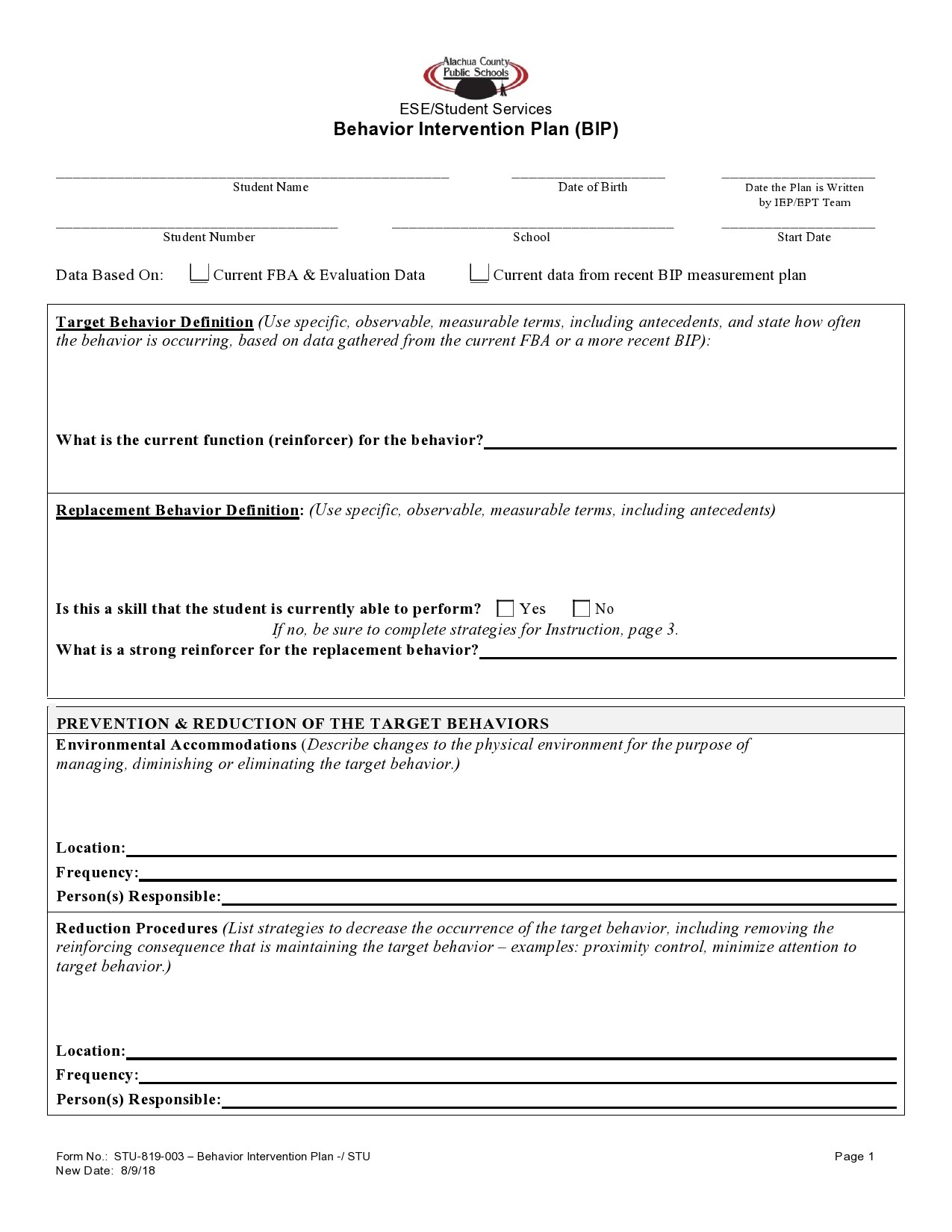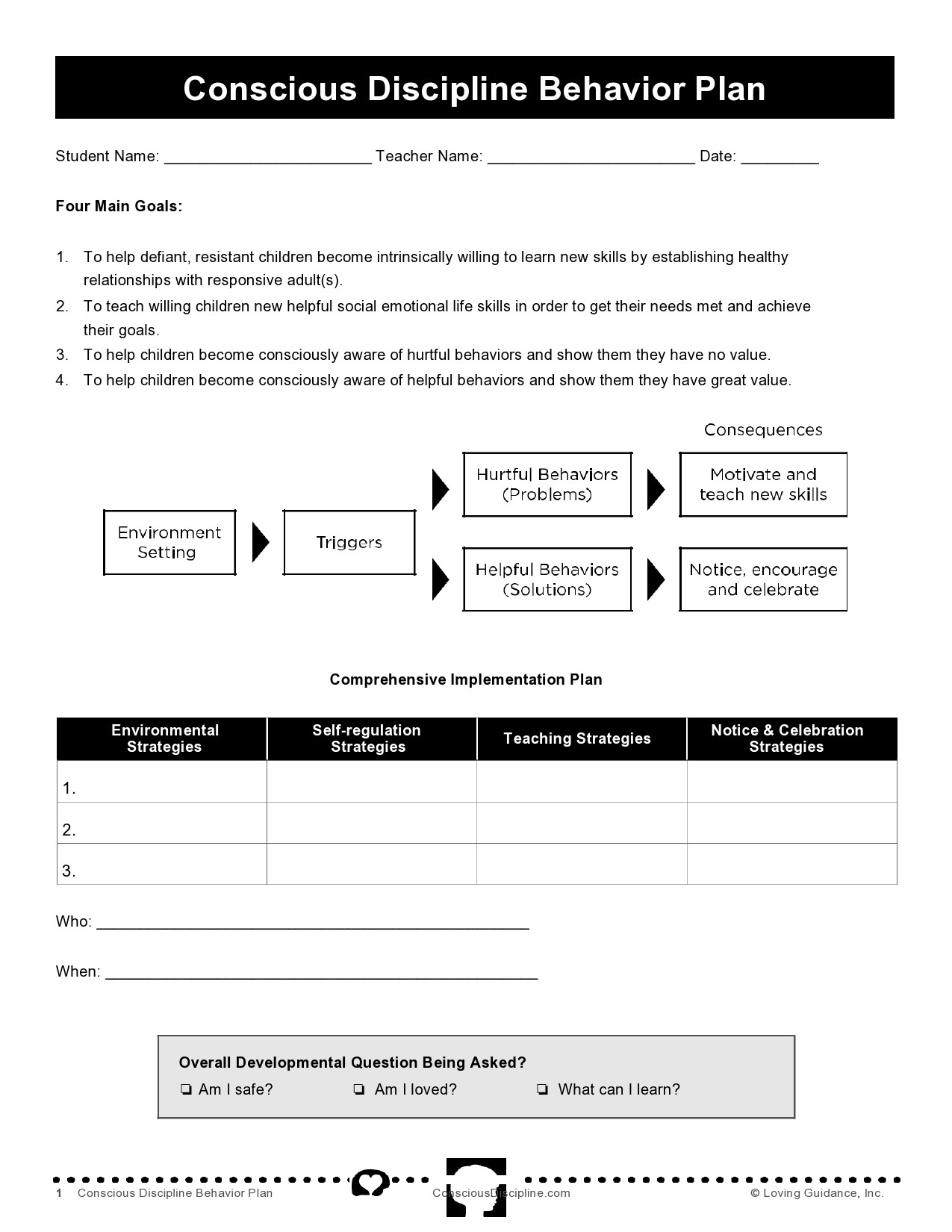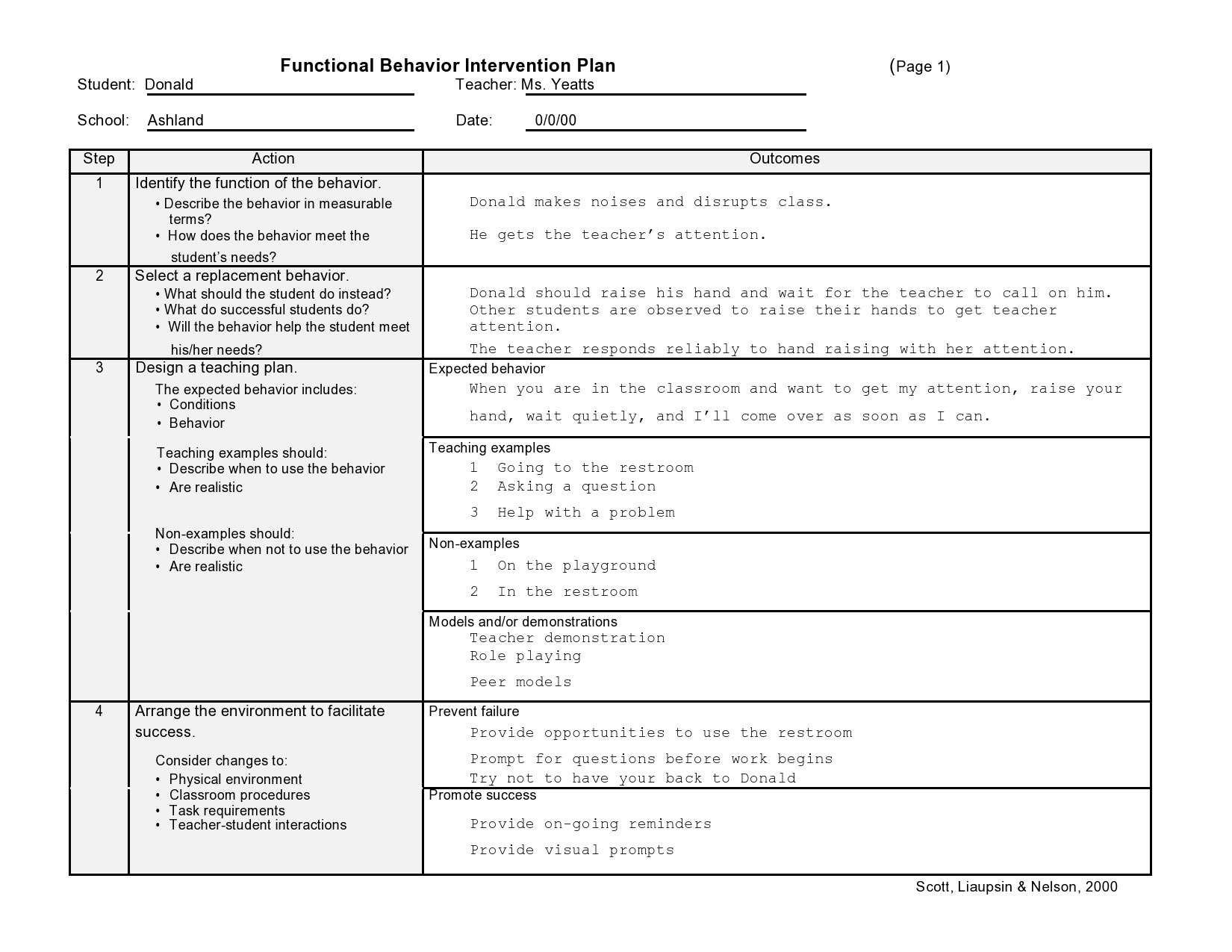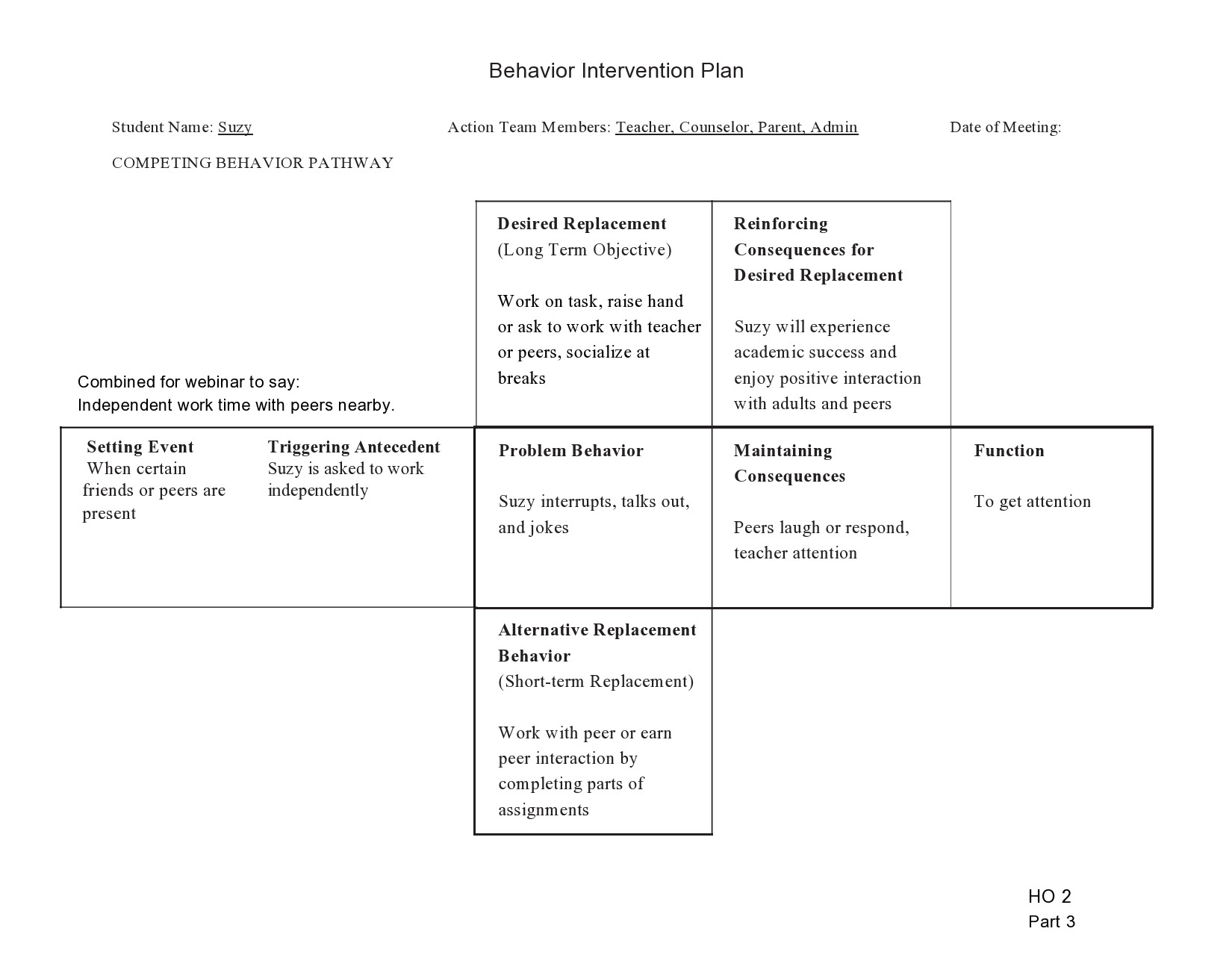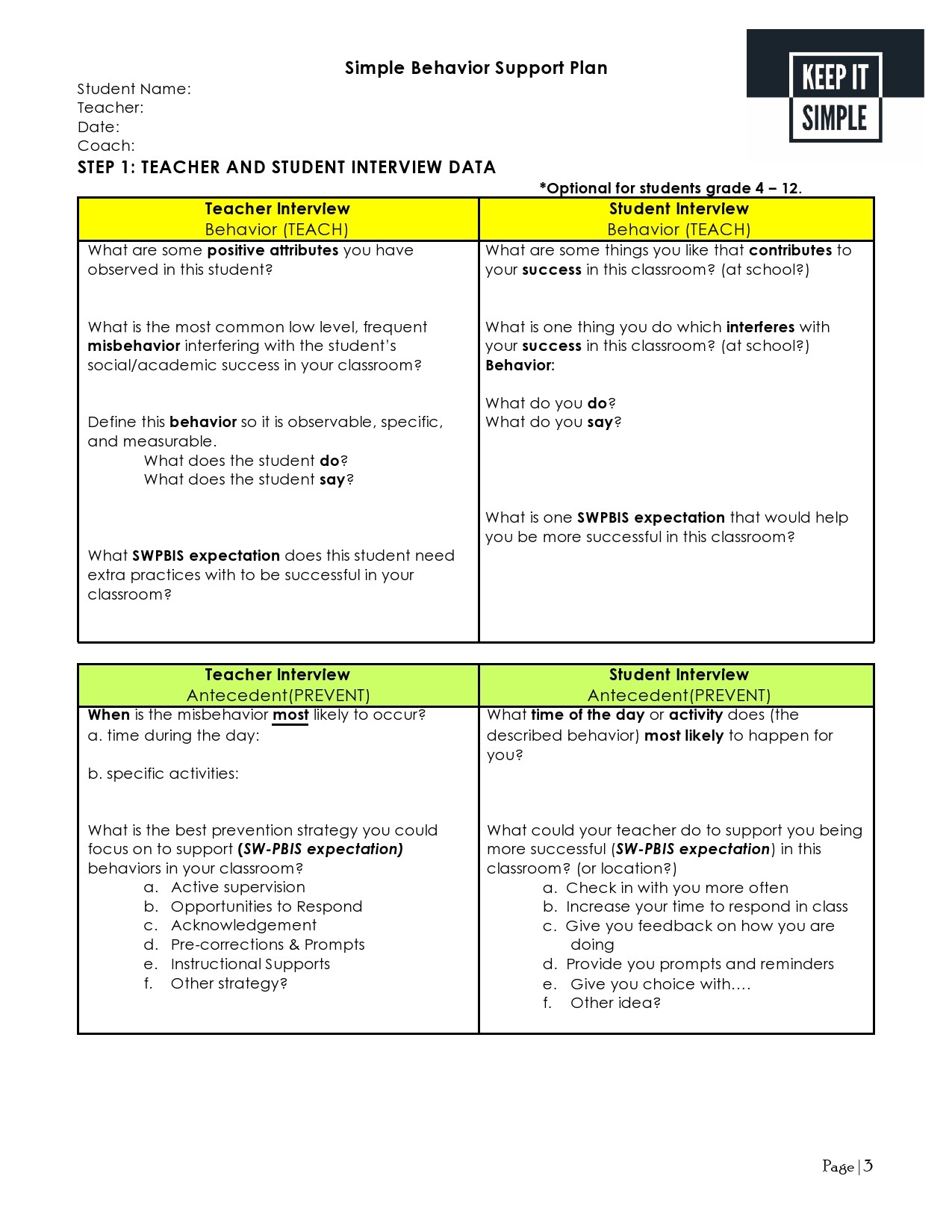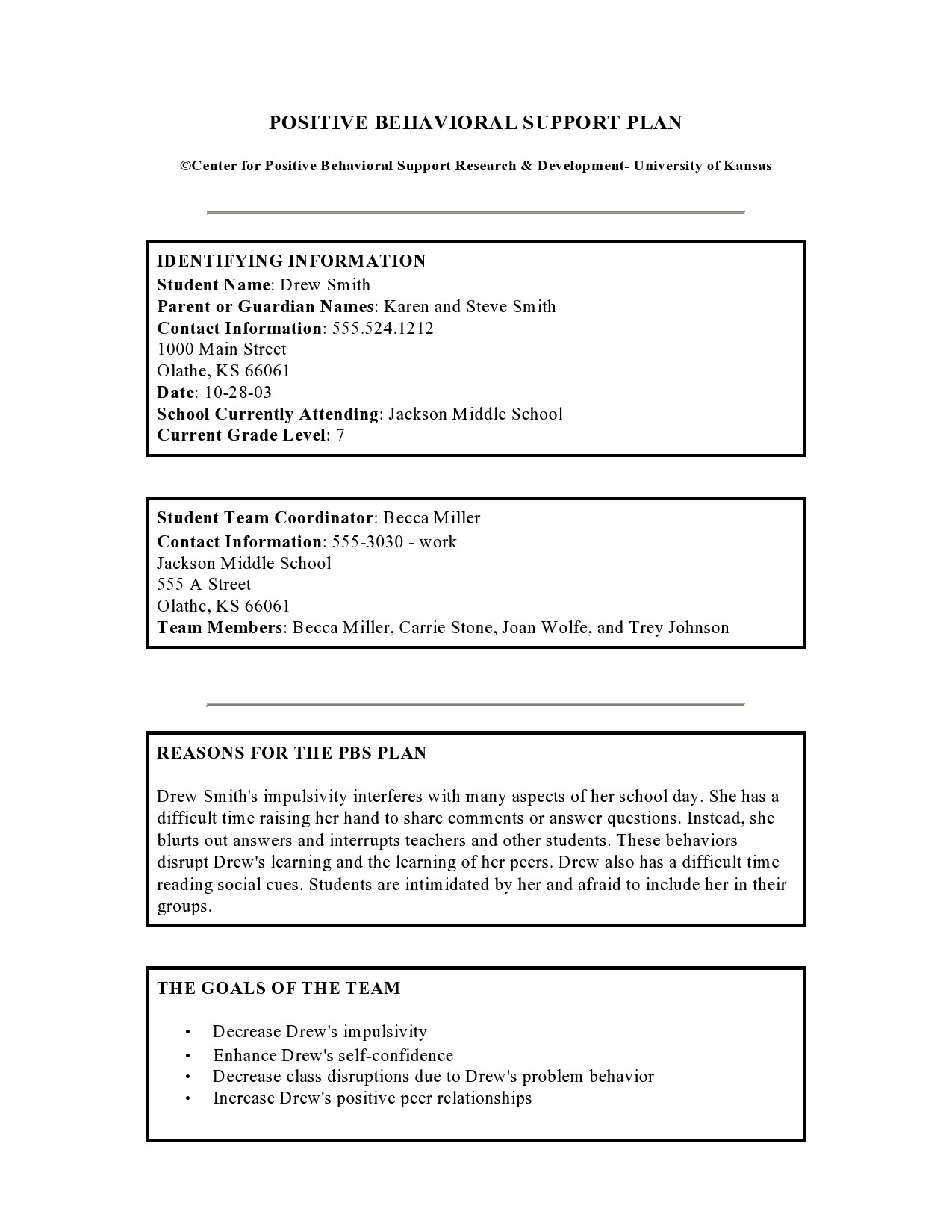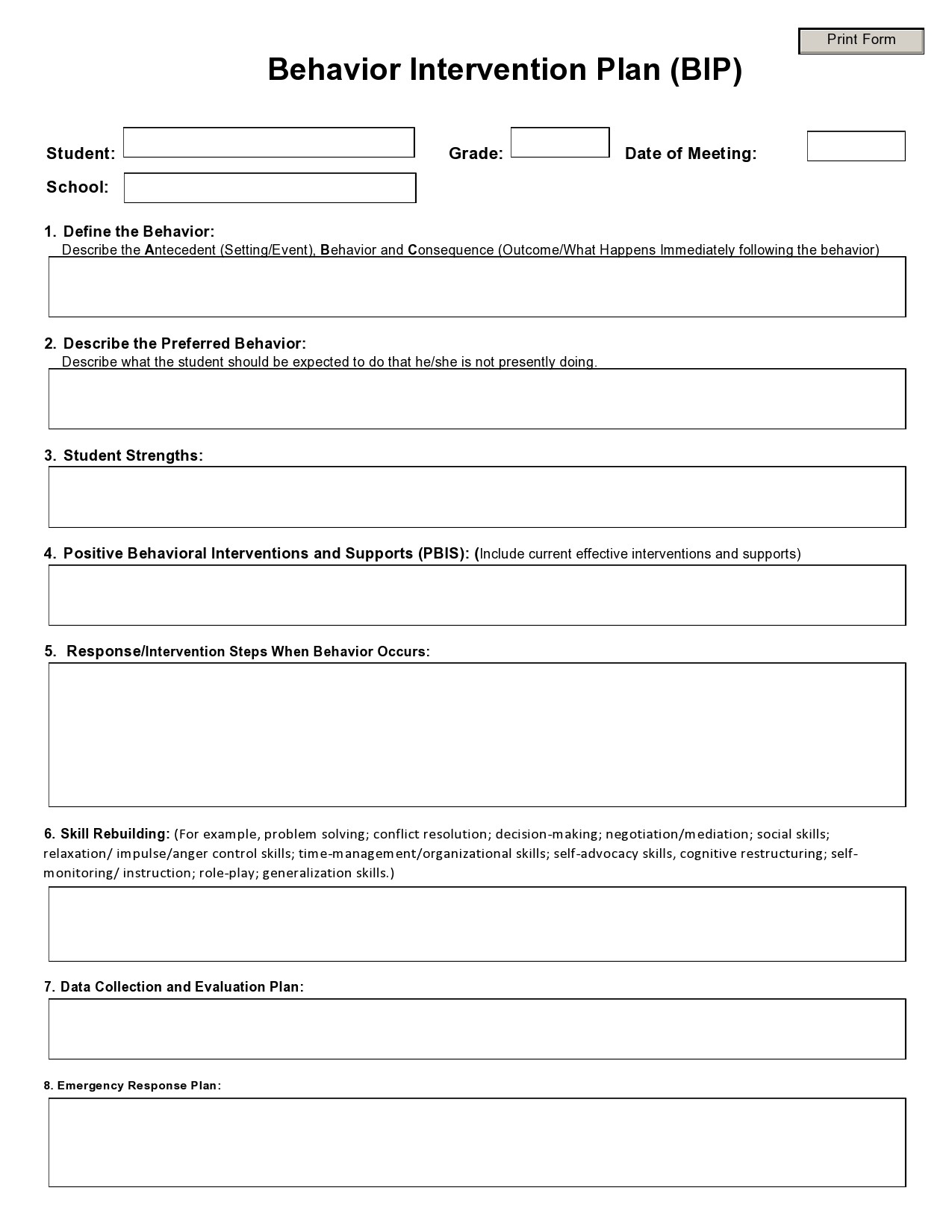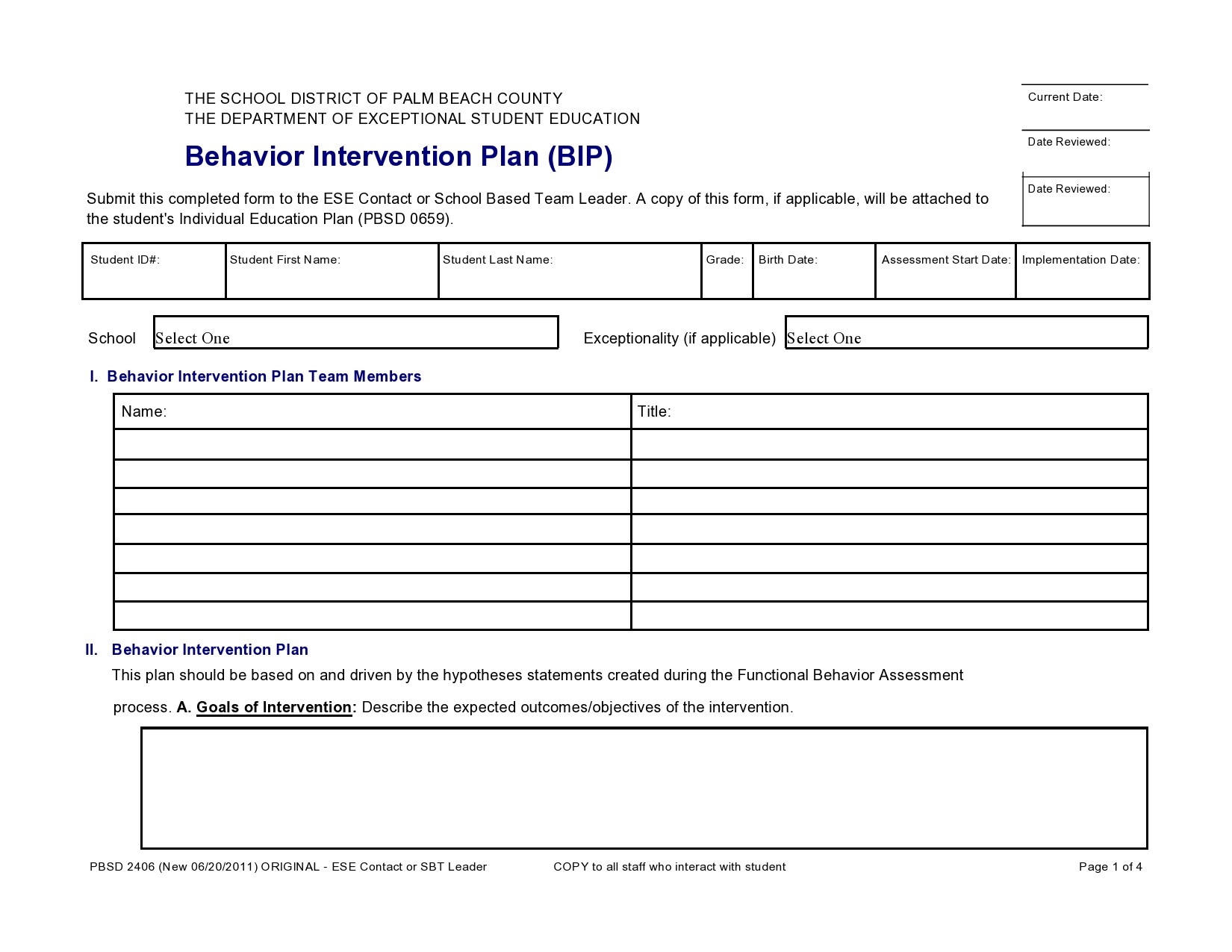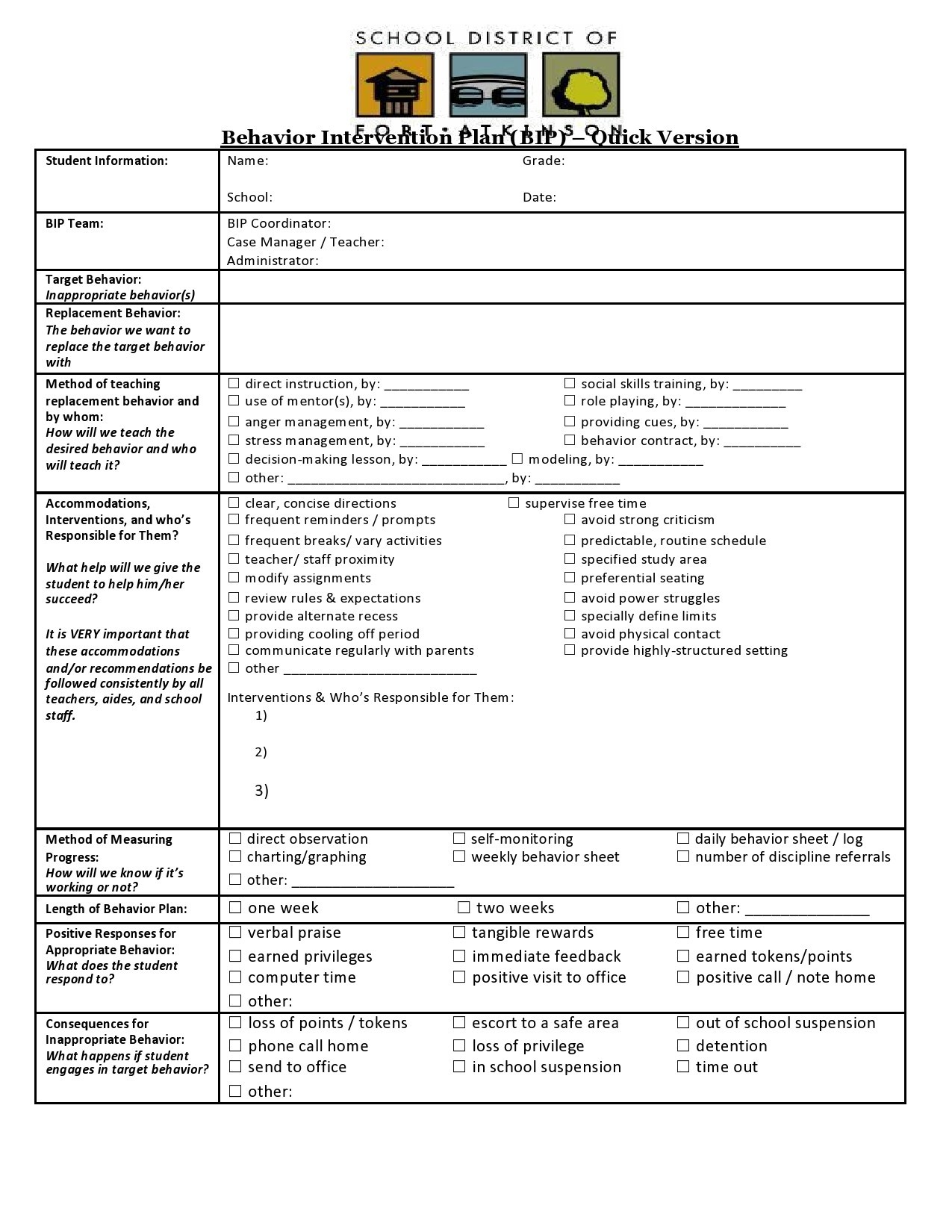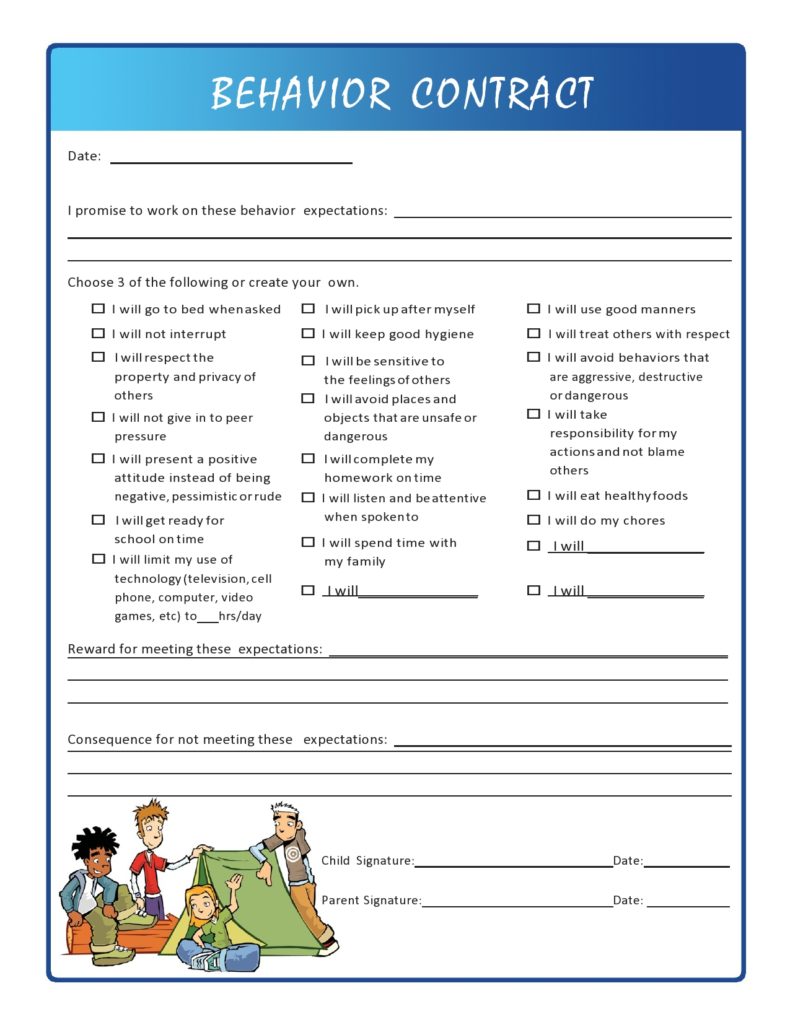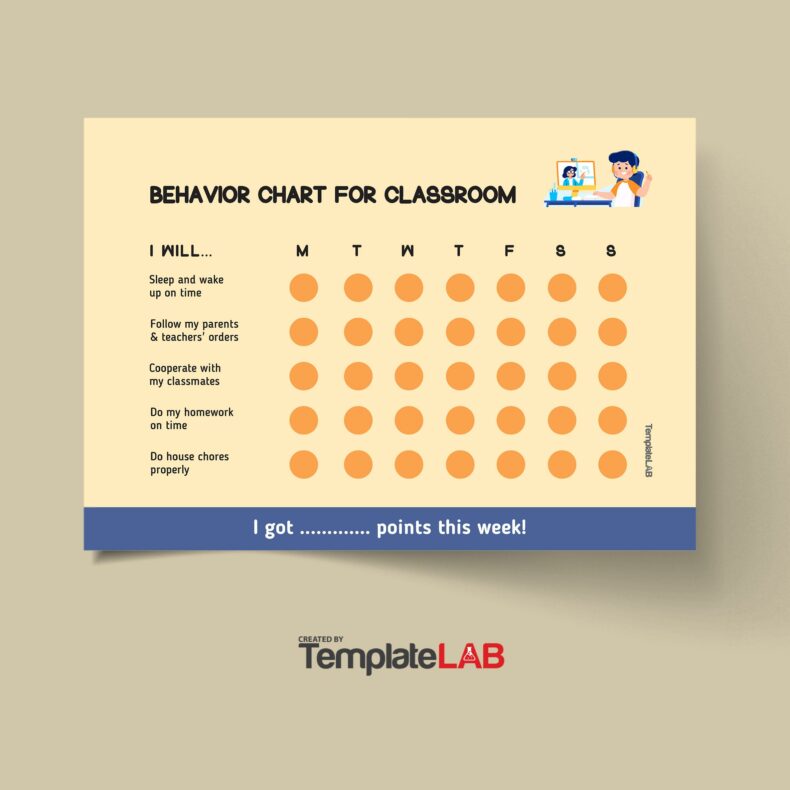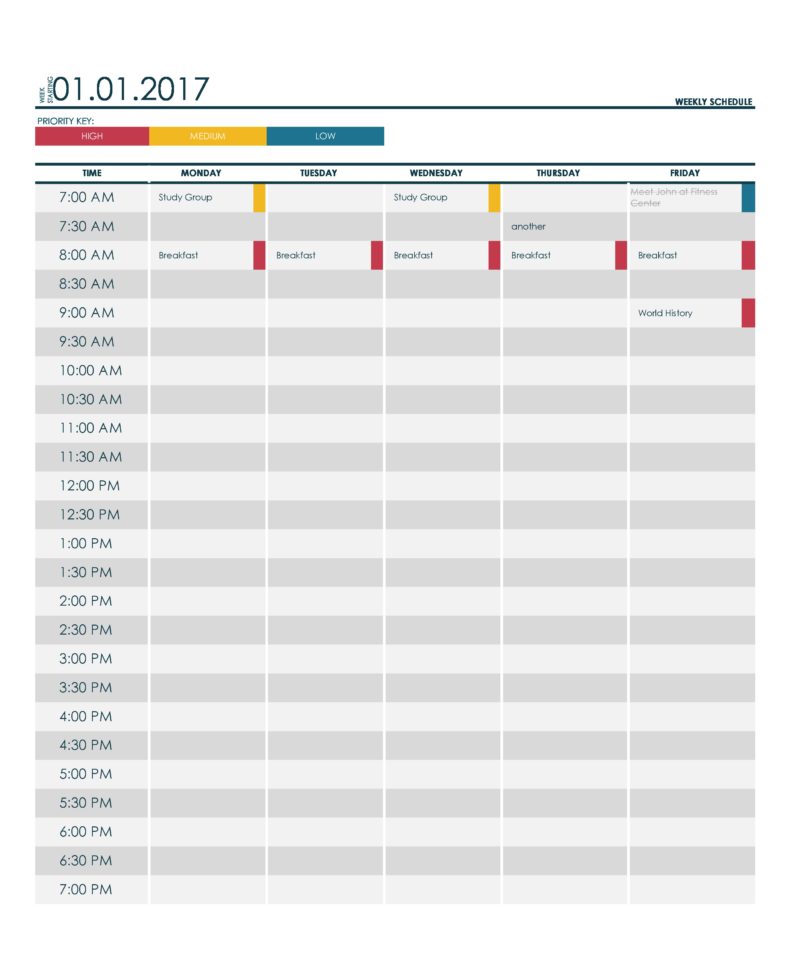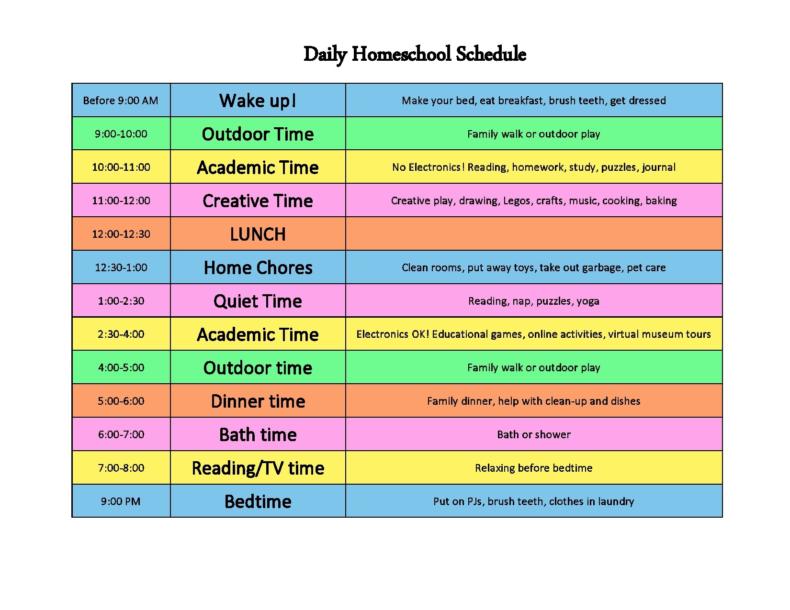Some children may have behavioral problems that might inhibit their academic performances. A lack of focus on their part won’t allow them to finish their work in school, thus, causing disruptions in the classroom and constantly get them in trouble. As a teacher, you can provide assistance to your students by creating a behavior plan template.
Table of Contents
- 1 Behavior Plan Templates
- 2 What is a behavior plan?
- 3 Behavior Intervention Plan Templates
- 4 Why do you need a behavior plan?
- 5 Behavior Support Plan Templates
- 6 The contents of a behavior plan template
- 7 BIP Examples
- 8 Tips for creating a behavior plan template
- 9 BIP Special Educations
- 10 Things to watch out for when using behavior plans
Behavior Plan Templates
What is a behavior plan?
A behavior plan is a written document that teaches good behavior and rewards it. A behavior support plan template can be just one page or several pages depending on certain factors. The main objective of the behavior plan is to stop or prevent misbehavior in children without resorting to punishments.
All BIP examples contain three main parts namely the behavioral problem, a description for the cause of the problem, and recommendations of support or strategies to help. Coming up with a behavior plan may include:
- A school team to interview the child, the child’s teacher, and other members of the school.
- Observation of the child and consulting with the child’s family to understand what’s happening.
- Testing and a review of all past incidents or report cards.
The support and strategies that the behavior plan entails are the interventions. These are usually formal in nature and carried out for a set period of time. The team conducting the plan also monitors how these interventions work. This is why the plan is also known as a behavior intervention plan template.
Behavior Intervention Plan Templates
Why do you need a behavior plan?
It is inevitable to have behavior issues in classrooms and this has become a significant problem. Fortunately, some teachers seem to know how to handle these behavior problems, especially those who have learned strategies for behavior intervention. A knowledge of these intervention strategies can improve the classroom environment which, in turn, leads to fewer frustrations while promoting better learning for all of the students.
Although some teachers are naturally gifted in promoting good behavior in students, most have to learn specific techniques for behavior intervention along with a lot of practice, heart, and patience to remain consistent. Here are some reasons why you may need such a plan:
- To deal with students in the best possible way
Students are not all the same. Some may not be intrinsically motivated to make good choices because of several reasons. They can have varying expectations in their homes, they may have underlying issues with impulsivity or they’re looking for negative attention, all of which can affect their behavior.
As such, they need additional support to help them make good choices. One of the most essential steps to improve behavior is to learn the function of the behavior. When you understand the causes or precursors of the behavior, this can help you develop a successful and realistic behavior support plan template. - To help teachers do their jobs more effectively
As a teacher, you should implement a behavior intervention with the help of the School Administrator, School Psychologist, and other professionals in the school. The presence of the school psychologist as an observer of the student and the class dynamics can help in the development of the BIP special education.
There are several types of behavior intervention plan templates that you can use but it’s recommended to have custom behavior plan templates because each child is unique and you should use the behavior plan that best caters to their needs. In general, you as a teacher must implement the behavior strategies. If these should fail, then you can implement a more formal Functional Behavior Assessment and Intervention Plan.
Behavior Support Plan Templates
The contents of a behavior plan template
When creating BIP examples, the first step involves fact-finding. You should examine the events in the life of the student that might have caused their behavior, the likely causing events, the likely effects, and the situations in which the behaviors don’t occur. Most behavior plan templates include
- Proactive Manipulation
You should consider if you can restructure the child’s learning environment in such a way that it eliminates the cause of bad behaviors. If you can make adjustments to the classroom to decrease or eliminate the things that trigger certain behaviors, this allows you to spend more time replacing the bad behavior and reinforcing good behavior. - Targeted Behaviors
Your behavior intervention plan template would narrow down the behaviors to a few are closely interrelated, usually about 3 to 4 at the most. - Reinforcement Plan
This should provide a short description of your proactive means that support appropriate or replacement behavior. For instance, a replacement behavior for calling out answers would be to raise the child’s hand and you include a means to reward or reinforce that activity in your behavior support plan template. - Protocol for Dealing with Unacceptable or Dangerous Behavior
You should include how you plan to respond to a child’s dangerous behavior. You must first define “unacceptable” as it isn’t to reinforce punishment when anyone gets angry at the child. One purpose of the behavior plan is to restrict adults from counterproductive or reactive behaviors of their own, like yelling at the child or punishing them.
BIP Examples
Tips for creating a behavior plan template
Children who display challenging behaviors require positive behavior support to achieve success, especially in the school setting. Their display of negative behaviors may be the result of several things. Any or all these factors can impede the child’s learning as well as their peers.
Both teachers and parents can collaborate to come up with a positive BIP special education to promote the eventual happiness and success of a child. You can create such a plan by following these simple steps:
- Preparation
The first goal of the plan is to find out why the child displays such behavior. To do this, you need to gather data.
To remember the process, collect anecdotal information and the “A-B-C-Data” which stands for Anecdotal Behavior and Consequence.
Observe patterns and trends and when they occur, record the time of day, class or subject, the people nearby, and other patterns.
Finally, keep track of the duration and frequencies of the behaviors. - Determine the functions of behavior
Use the data you collected for this. Consider all of the possibilities that can explain why the student engages himself in such behaviors. Consider whether the student:
Wants to avoid, postpone or escape from something.
Seeks the attention of adults or peers by engaging in the behavior.
Tries to avoid or gain sensory input.
Tries to access tangibles. - Write your behavior plan template and executing it
Your initial focus should be on the antecedent interventions for the prevention of negative behaviors. Whenever possible, choose antecedent interventions as these can help keep the child’s behavior from happening again.
Include possible coping skills. Using relaxation techniques like counting, yoga, and meditation can help.
Highlight communication options. This involves teaching the child communication skills so he can verbalize his needs and wants more appropriately.
Incorporate social skills too. You can use social stories to teach expectations to the child. Also, involve other students to demonstrate appropriate behaviors.
A case manager gets assigned to a child in school while the parents and school team may meet with the purpose of developing an Individualized Education Program (IEP) to support the child’s behavior at school. Therefore, make sure that your plan is both consistent and easy to understand.
Try to remain positive. Don’t get discouraged just because the behavior plan you tried isn’t successful or if you discover that your behavior plan stopped working after a few weeks.
Evaluate and revise the plan as needed. It’s always good practice to regularly assess and update your behavior plan to reflect motivation, maturity, and preferences.
Focus on the child at all times. Always keep in mind that students with challenging behaviors need positive attention, love, support, and guidance. As a teacher, you should provide all of these. Your student should feel your willingness to provide these as you already have begun to seek ways to help them.
BIP Special Educations
Things to watch out for when using behavior plans
You cannot ignore the fact that children will change over time. Because of this, your behavior plan template should change and evolve too. Schools should regularly conduct a review of BIPs and make the necessary adjustments whenever there is new information or if the students need any changes.
Through experience, many of the behavior plans don’t work out in the beginning. This usually happens when there is a mismatch between the behavioral problem and the strategies you have included in the behavior plan. There are times when the school would assume that the child is just acting out for one reason but that isn’t the real reason. For instance, the child may crack jokes to hide difficulty in reading.
Another drawback is when the family and the school develop a plan but do not follow up on it. If the behavior plan doesn’t have an effect on the child, it can get outdated, especially if there are any incentives or rewards included in the plan. What may have proven effective in the beginning may become passé, thus, you need to change these things.

